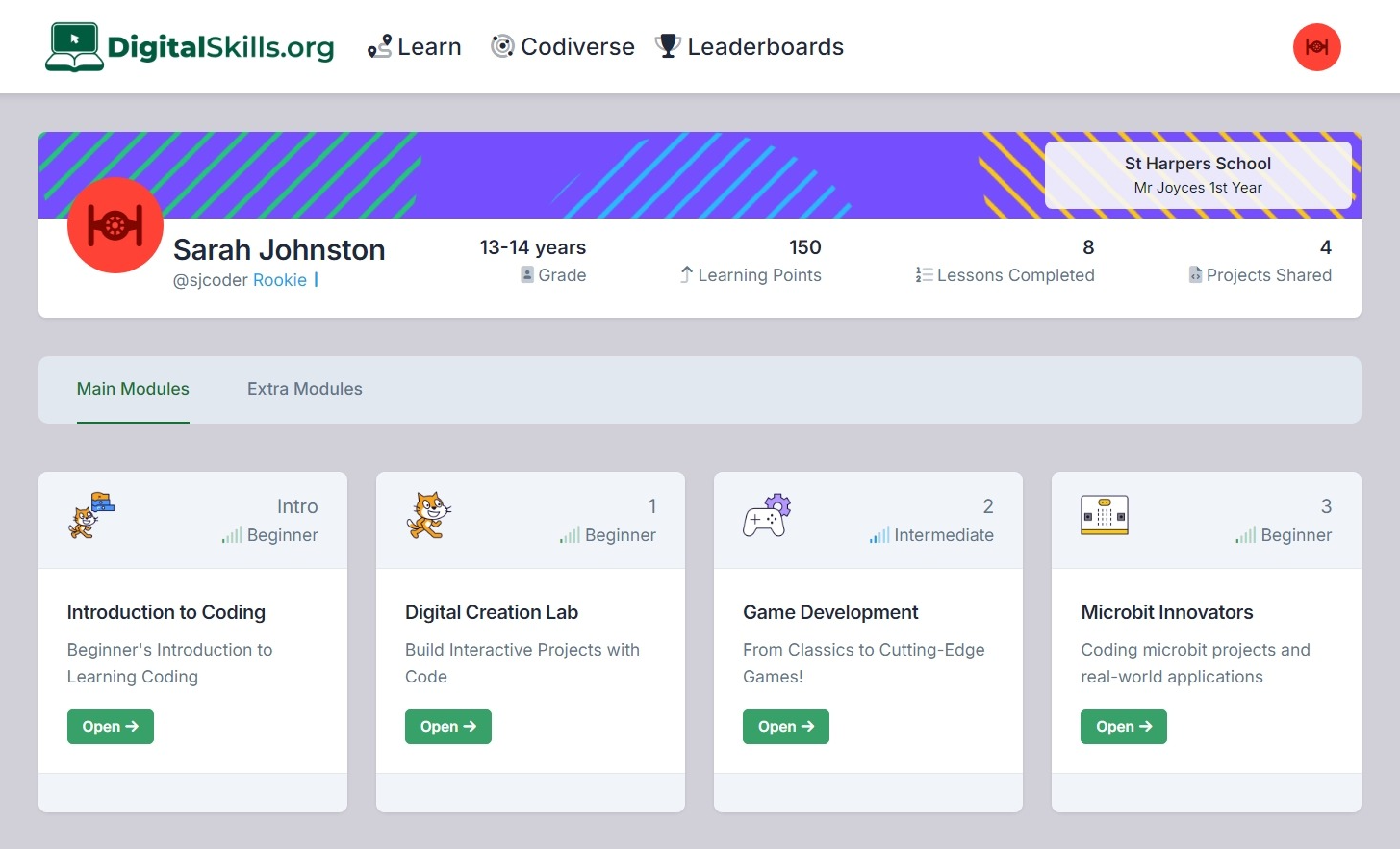Digital Skills Curriculum for Secondary Education
Our curriculum supports the development of critical digital skills such as coding and robotics, preparing students for the future and fostering their growth as engaged, global digital citizens.
- From Year 7 to Year 11 students
Trusted by Leading Schools - Get started

JFK Memorial School
Limerick
.webp)
Castlebar Primary School
Mayo
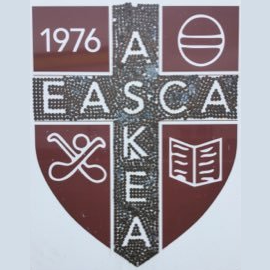
Holy Family Boys NS
Carlow
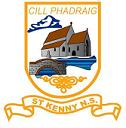
St Kennys NS
Westmeath
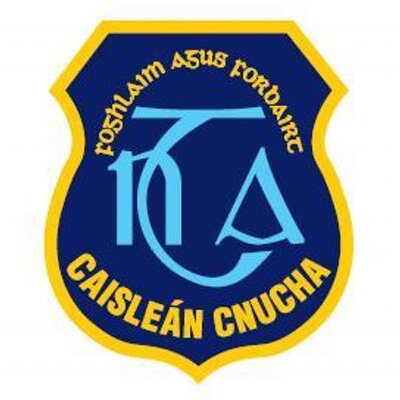
Scoil Thomais
Dublin

St Josephs NS
Louth
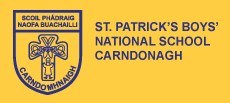
Carndonagh Boys NS
Donegal
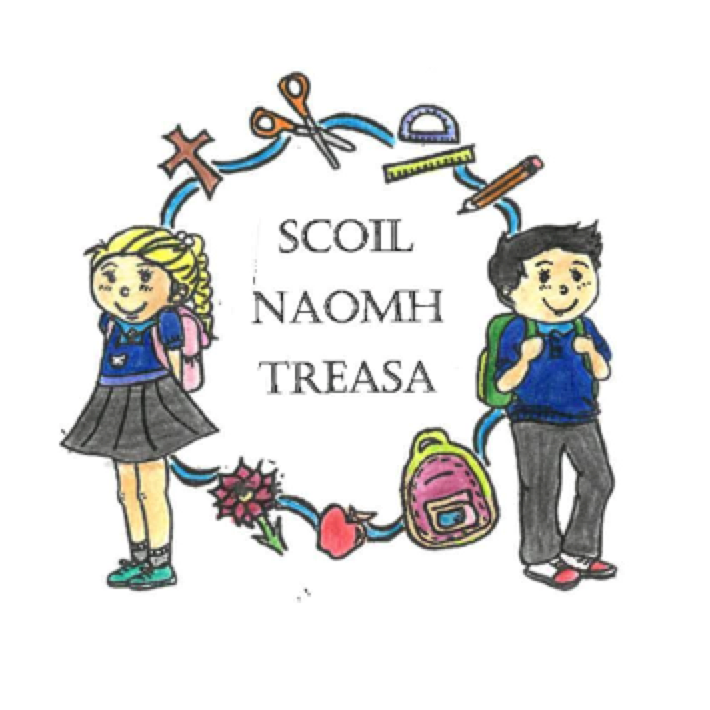
Ballyroe Central Ns
Kildare
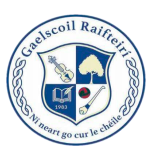
Scoil Raifteiri
Mayo
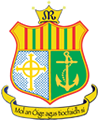
Naomh Mhichil Athy
Kildare
.png)
Scoil Aodh Rua agus Nuala
Donegal
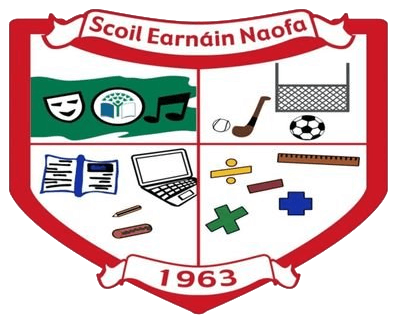
St Ernans NS
Westmeath
.png)
St Baithins NS
Donegal
.png)
Gaelscoil Durlas
Tipperary
.png)
Gaelscoil Faithleann
Kerry
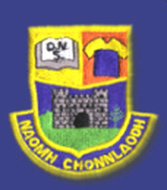
St Conleths NS
Kildare
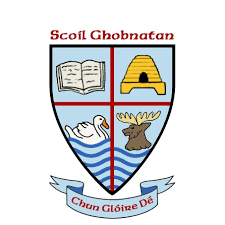
Scoil Ghobnatan
Cork
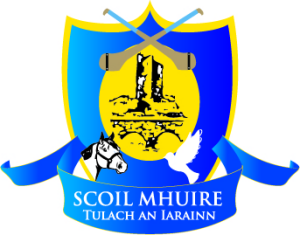
Tallow NS
Waterford
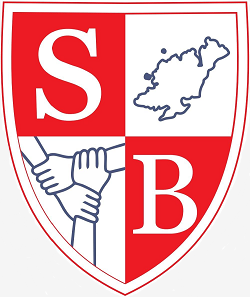
St Bernadette’s Special School
Donegal
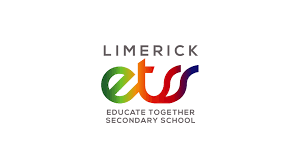
Limerick City East Educate Together
Limerick
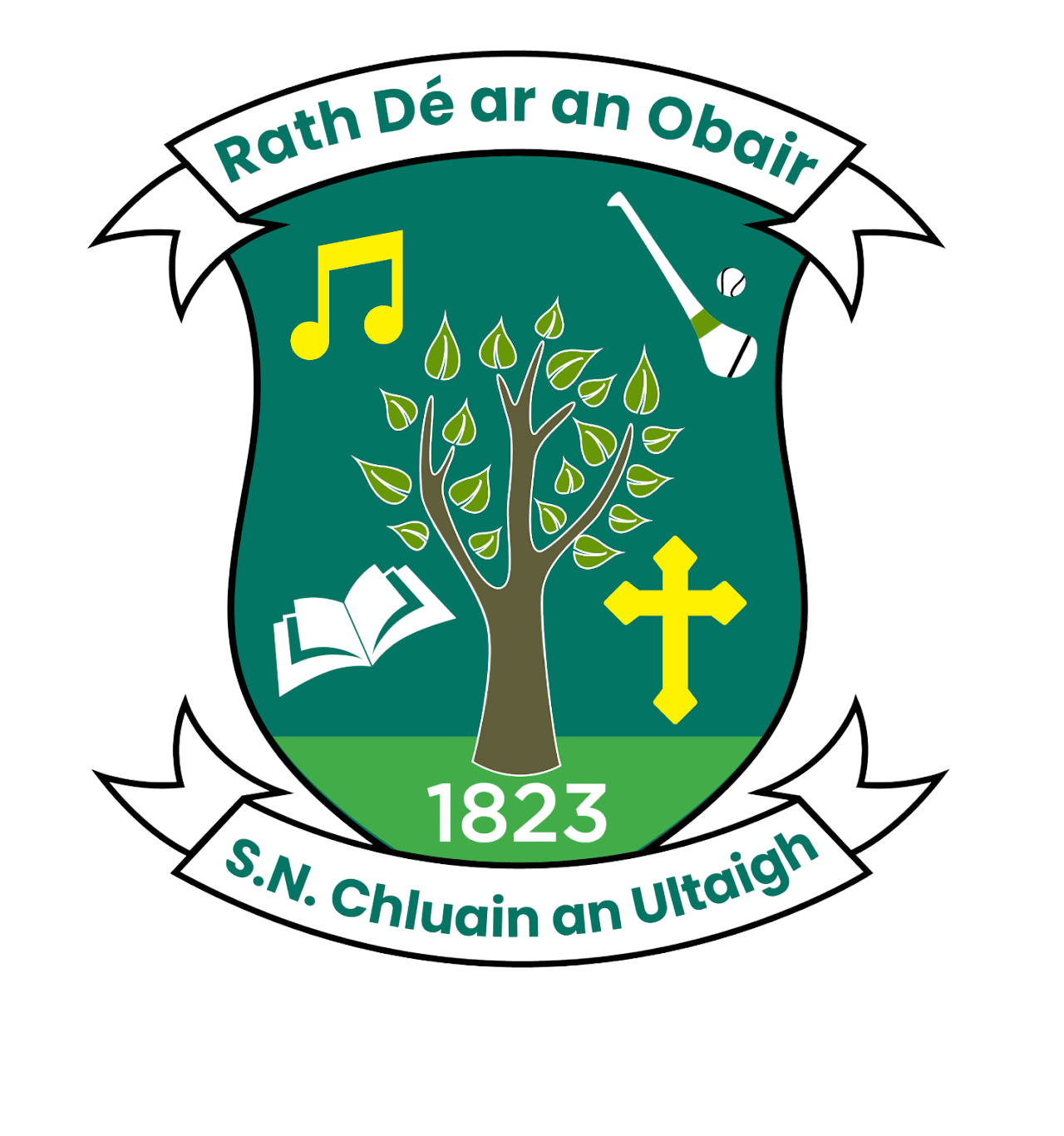
Clonoulty Central NS
Tipperary
%20(1).png)
St. Brigid's GNS
Dublin
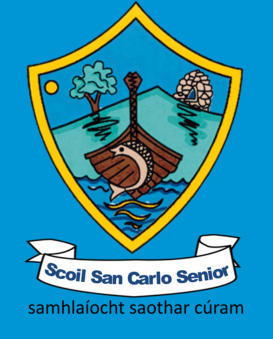
San Carlo Senior NS
Kildare
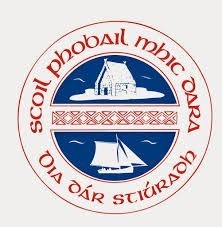
Scoil Mhic Dara
Galway
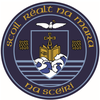
Skerries Ns
Dublin
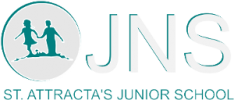
St Attractas Junior NS
Dublin
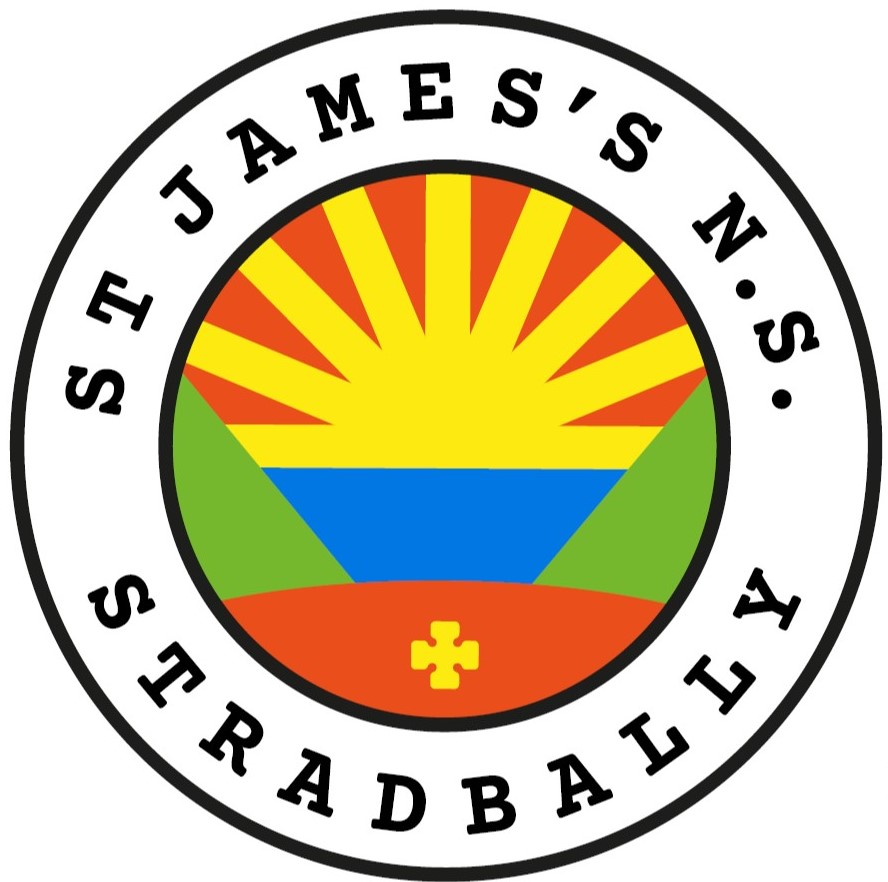
St James's NS
Waterford
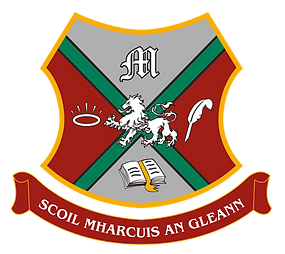
St Marks BNS
Cork
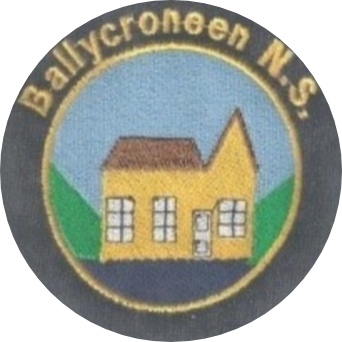
Ballycroneen NS
Cork

Glaslough NS
Monaghan

Digital Skills Curriculum
2025/26 EditionFrom £9 per student, includes student access & teacher resources.
Get prepared for 2025/26 FAQsDigital Skills Curriculum
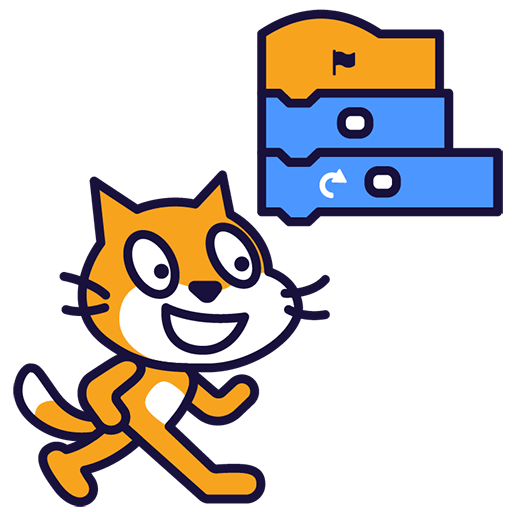 Introduction to Coding
Introduction to Coding
- Understand the concept of coding and its potential applications.
- Gain proficiency in using Scratch for creating projects, including adding sprites and backdrops, and making sprites move.
- Experiment with different code blocks in Scratch and learn from trial and error.
- Create a Paddle Ball Game using Scratch, incorporating skills such as moving sprites, changing backdrops, and using sensing blocks.
- Understand and apply the concepts of X and Y coordinates in the context of Scratch projects.
- Understand the concept of coding and its applications.
- Develop basic skills in Scratch, including creating projects, adding sprites and backdrops, and making sprites move.
- Experiment with different code blocks in Scratch and learn from mistakes.
- Create a Paddle Ball Game using Scratch, demonstrating the ability to move sprites, change backdrops, and use sensing blocks.
- Understand and apply the concepts of X and Y coordinates in the context of Scratch coding.
Students will need to use one of these devices. If necessary, students can work in groups (ideally in a group of 2 or 3 students) and use one device between them.
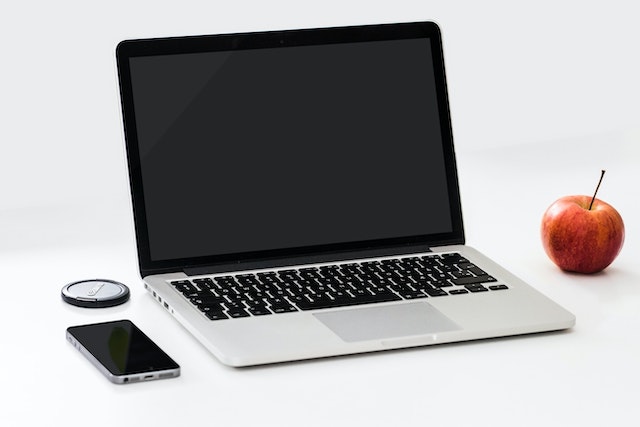 Chromebook/Laptop/PC
Chromebook/Laptop/PC
 Chromebooks, laptops, and PCs are crucial tools for coding and digital skills education. Chromebooks are ideal for web-based applications and collaborative projects, while laptops and PCs support a wider range of programming environments and software for more intensive tasks like software development and data analysis.
Chromebooks, laptops, and PCs are crucial tools for coding and digital skills education. Chromebooks are ideal for web-based applications and collaborative projects, while laptops and PCs support a wider range of programming environments and software for more intensive tasks like software development and data analysis.Equipped with full keyboards and the ability to run specialized coding software, these devices enable students to learn programming languages, debug code, and understand software architecture. Their versatility supports both individual learning and group projects, making them indispensable for developing critical digital and computational thinking skills in the classroom.
 iPad/Tablet
iPad/Tablet

iPads and tablets are versatile, portable computing devices that offer a wide range of educational applications in the classroom. Featuring touch-sensitive screens ranging from 7 to 13 inches, these devices allow students and teachers to interact directly with content through touch, swipe, and voice commands.
| Unit | Lesson | Level | |
|---|---|---|---|
| What is Coding? | Introduction to Coding | Quiz | Beginner |
| What is Coding? | Scratch Tutorial | Quiz Challenge | Beginner |
| Coding your first project | Paddle Ball Game | Quiz Challenge | Beginner |
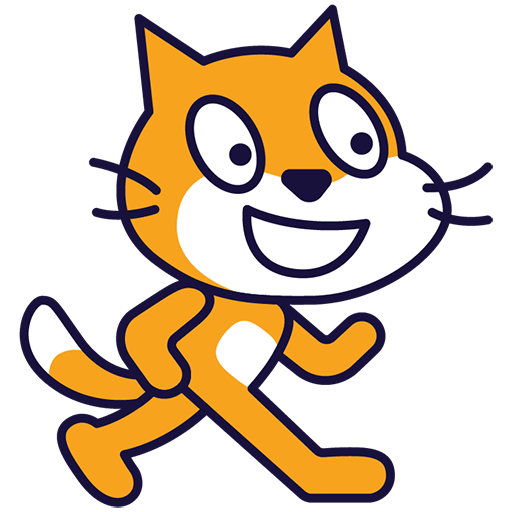 Digital Creation Lab
Digital Creation Lab
- Develop proficiency in using Scratch to create interactive projects, including games and language translators.
- Understand and apply coding concepts such as variables, loops, and collision detection in Scratch projects.
- Gain skills in designing and animating sprites, creating backdrops, and controlling sprite movements in Scratch.
- Learn to manipulate tools and extensions in Scratch, such as the pen tool, Translate, and Text to Speech.
- Enhance creativity, problem-solving, and critical thinking skills through hands-on coding challenges and game development.
- Develop a language translator using Scratch, incorporating Translate and Text to Speech extensions, variables, and interactive elements.
- Create an engaging 'Shark Swim' game using Scratch, mastering sprite control, animation, collision detection, and game loop establishment.
- Program an autonomous car using Scratch, understanding autonomous vehicle operation, sprite manipulation, track design, and autonomous navigation.
- Design unique patterns using Scratch, utilising the pen tool, variables, and pen colour and size manipulation.
- Construct an interactive game using Scratch, controlling a coloured disc, cloning attacking dots, and detecting dot colours.
- Develop a rocket landing game using Scratch, programming gravity, rocket movement, animations, and fuel limits.
- Create a platformer game using Scratch, designing characters, creating platforms, controlling character movements, and adding effects.
- Engage in build battles, demonstrating problem-solving skills and creativity in tackling code challenges.
Students will need to use one of these devices. If necessary, students can work in groups (ideally in a group of 2 or 3 students) and use one device between them.
 Chromebook/Laptop/PC
Chromebook/Laptop/PC
 Chromebooks, laptops, and PCs are crucial tools for coding and digital skills education. Chromebooks are ideal for web-based applications and collaborative projects, while laptops and PCs support a wider range of programming environments and software for more intensive tasks like software development and data analysis.
Chromebooks, laptops, and PCs are crucial tools for coding and digital skills education. Chromebooks are ideal for web-based applications and collaborative projects, while laptops and PCs support a wider range of programming environments and software for more intensive tasks like software development and data analysis.Equipped with full keyboards and the ability to run specialized coding software, these devices enable students to learn programming languages, debug code, and understand software architecture. Their versatility supports both individual learning and group projects, making them indispensable for developing critical digital and computational thinking skills in the classroom.
 iPad/Tablet
iPad/Tablet

iPads and tablets are versatile, portable computing devices that offer a wide range of educational applications in the classroom. Featuring touch-sensitive screens ranging from 7 to 13 inches, these devices allow students and teachers to interact directly with content through touch, swipe, and voice commands.
| Unit | Lesson | Level | |
|---|---|---|---|
| Lesson | Translate | Quiz Challenge | Beginner |
| Lesson | Shark Swim | Quiz Challenge | Beginner |
| Lesson | Autonomous Car | Quiz Challenge | Intermediate |
| Lesson | Pattern Creator | Quiz Challenge | Intermediate |
| Lesson | Attack of the Dots | Quiz Challenge | Intermediate |
| Lesson | Rocket Lander | Quiz Challenge | Advanced |
| Lesson | Scratch Platformer | Quiz Challenge | Advanced |
| Lesson | Build Battles | Advanced |
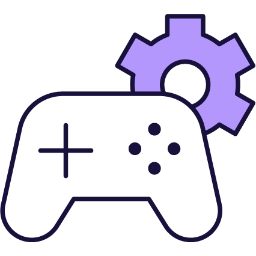 Advanced Game Development
Advanced Game Development
- Master the use of MakeCode Arcade for game development, including sprite creation, movement control, and game logic programming.
- Develop proficiency in designing and implementing various game types such as arcade, platform, and space-themed games.
- Understand and apply key game development concepts such as object generation, collision detection, scoring systems, and game rules.
- Enhance problem-solving skills through coding challenges and game modifications.
- Cultivate creativity and teamwork through collaborative game project brainstorming and development.
- Create and control game sprites using MakeCode Arcade, including movement, interaction, and visual design.
- Implement game mechanics such as scoring systems, timers, and life counters.
- Design and draw game maps, including tile placement and sprite interaction.
- Apply coding concepts to create interactive games, including object generation, overlap detection, and event handling.
- Develop teamwork and creativity skills through group brainstorming and project creation.
Students will need to use one of these devices. If necessary, students can work in groups (ideally in a group of 2 or 3 students) and use one device between them.
 Chromebook/Laptop/PC
Chromebook/Laptop/PC
 Chromebooks, laptops, and PCs are crucial tools for coding and digital skills education. Chromebooks are ideal for web-based applications and collaborative projects, while laptops and PCs support a wider range of programming environments and software for more intensive tasks like software development and data analysis.
Chromebooks, laptops, and PCs are crucial tools for coding and digital skills education. Chromebooks are ideal for web-based applications and collaborative projects, while laptops and PCs support a wider range of programming environments and software for more intensive tasks like software development and data analysis.Equipped with full keyboards and the ability to run specialized coding software, these devices enable students to learn programming languages, debug code, and understand software architecture. Their versatility supports both individual learning and group projects, making them indispensable for developing critical digital and computational thinking skills in the classroom.
 iPad/Tablet
iPad/Tablet

iPads and tablets are versatile, portable computing devices that offer a wide range of educational applications in the classroom. Featuring touch-sensitive screens ranging from 7 to 13 inches, these devices allow students and teachers to interact directly with content through touch, swipe, and voice commands.
| Unit | Lesson | Level | |
|---|---|---|---|
| Lesson | First Arcade Project | Quiz Challenge | Beginner |
| Lesson | Monkey Mayhem | Quiz Challenge | Beginner |
| Lesson | Space Shooter | Quiz Challenge | Beginner |
| Lesson | Platform Place | Quiz Challenge | Intermediate |
| Lesson | Arcade Build Battles | Intermediate | |
| Lesson | Galaxy Ghosts | Quiz Challenge | Advanced |
| Lesson | Donut Rush | Quiz Challenge | Advanced |
| Lesson | Game Lab | Advanced |
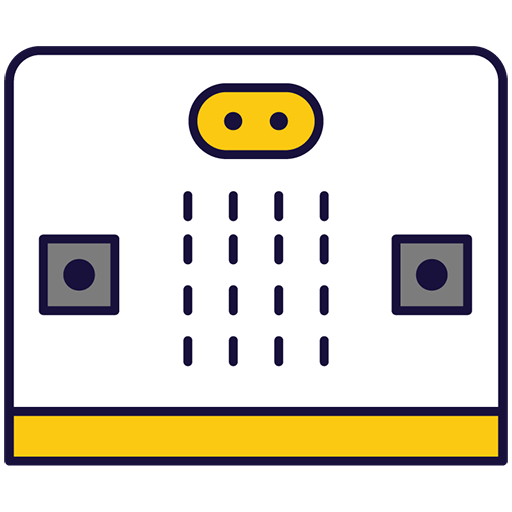 Microbit Innovators
Microbit Innovators
- Master the basics of microbits, including creating projects, writing and deleting code, and programming microbits to perform various tasks.
- Understand and utilise the different sensors in microbits, and interpret their responses to various inputs.
- Develop the ability to create interactive games using microbits, incorporating elements such as time constraints and randomised actions.
- Design and implement a microbit voting system, demonstrating an understanding of security considerations in system design.
- Apply knowledge of microbits to control external applications, such as a Scratch Paddle Ball game.
- Create a multi-device IoT network using microbits, programming each device to perform specific functions and communicate wirelessly with others.
- Develop a multiplayer game using microbits, demonstrating an understanding of proximity-based interactions and health value mechanics.
- Programme a microbit to display messages, react to button presses, show icons, play melodies, and respond to movement.
- Investigate and utilise the different sensors of a microbit to respond to various inputs.
- Develop a microbit game that requires precise timing and understanding of the device's capabilities.
- Create a multi-player game using microbit, incorporating random image display and corresponding actions.
- Design and implement a microbit voting system, including casting votes, tallying, and resetting the system.
- Control a Scratch Paddle Ball game using a microbit by tilting it to the left and right.
- Construct a multi-device IoT network using microbits to monitor and display temperature, light levels, and seismic activity.
- Develop a multiplayer game that simulates a zombie virus spreading among microbits, requiring multiple people and devices.
Students will need to use one of these devices. If necessary, students can work in groups (ideally in a group of 2 or 3 students) and use one device between them.
 Chromebook/Laptop/PC
Chromebook/Laptop/PC
 Chromebooks, laptops, and PCs are crucial tools for coding and digital skills education. Chromebooks are ideal for web-based applications and collaborative projects, while laptops and PCs support a wider range of programming environments and software for more intensive tasks like software development and data analysis.
Chromebooks, laptops, and PCs are crucial tools for coding and digital skills education. Chromebooks are ideal for web-based applications and collaborative projects, while laptops and PCs support a wider range of programming environments and software for more intensive tasks like software development and data analysis.Equipped with full keyboards and the ability to run specialized coding software, these devices enable students to learn programming languages, debug code, and understand software architecture. Their versatility supports both individual learning and group projects, making them indispensable for developing critical digital and computational thinking skills in the classroom.
The equipment listed below is used in lessons in this course. Please note that these items can be shared among students if necessary.
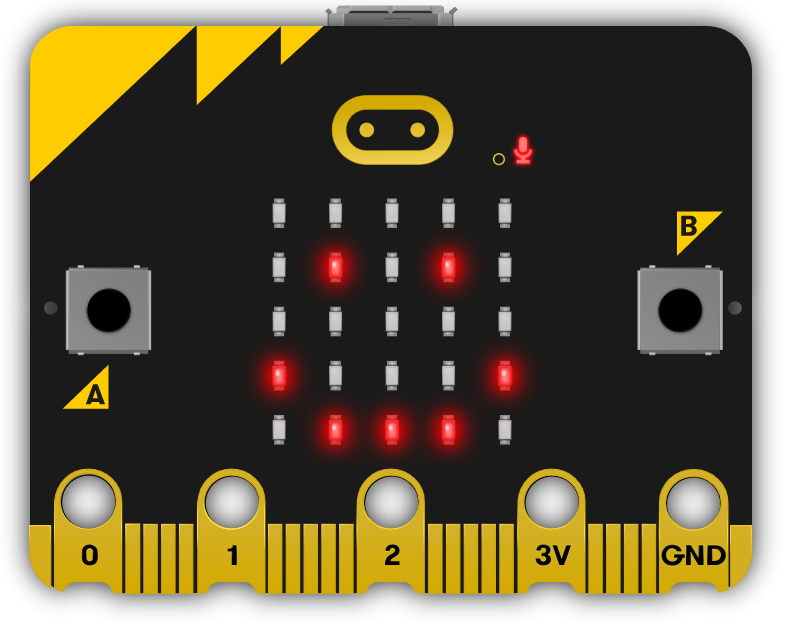 Microbit
Microbit

The BBC microbit is a pocket-sized codeable computer with motion detection, a built-in compass and Bluetooth technology.
The board measures 4 cm × 5 cm and has a processor, accelerometer and magnetometer sensors, Bluetooth and USB connectivity, a display consisting of 25 LEDs, two programmable buttons, and can be powered by either USB or an external battery pack.
The list of things you can program the Microbit to do is nearly endless. You can program the buttons, LEDs and different sensors to create games and turn the Microbit into things like a pedometer, a compass or even a musical instrument.
Where to buy
Microbits can be purchased from a number of online retailers and can be purchased with and without a USB cable and battery pack. They can also be purchased in bulk from some retailers.
Online retailers
| Unit | Lesson | Level | |
|---|---|---|---|
| Lesson | Exploring Microbits | Quiz | Beginner |
| Lesson | Microbit Sensor Graphs | Quiz Challenge | Beginner |
| Lesson | Exactly 11 | Quiz Challenge | Intermediate |
| Lesson | Microbit Bop It Game | Quiz Challenge | Intermediate |
| Lesson | Microbit Voting System | Quiz Challenge | Intermediate |
| Lesson | Microbit Paddle Ball | Quiz Challenge | Intermediate |
| Lesson | Microbit Zombies | Quiz Challenge | Advanced |
| Lesson | Microbit Lab | Advanced |
Extra Module
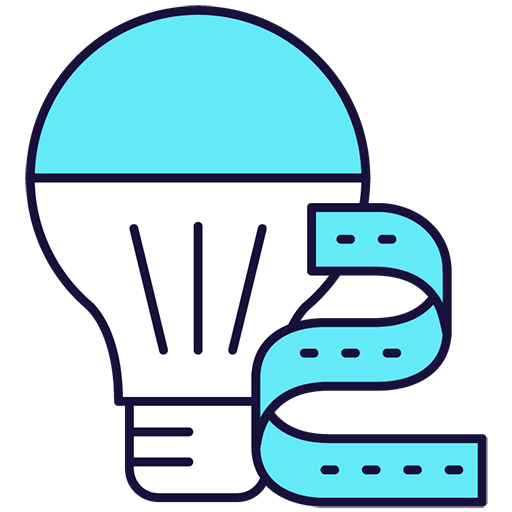
Exploring Electronics and Light
Microbit Makers: Code Light Shows & Interactive Projects!
 Exploring Electronics and Light
Exploring Electronics and Light
- Understand and apply the principles of programming LED strips using Microbit projects.
- Develop skills to create interactive LED displays that respond to sound and temperature changes.
- Design and implement a game using LED strip and Microbit programming.
- Enhance creativity and problem-solving skills through the design of LED flags and stacking effects.
- Apply teamwork and project management skills in brainstorming and executing a group Microbit project.
- Programme a strip of LEDs to display colourful patterns using Microbit.
- Design and implement an LED Strip Clapper that responds to sound, specifically a clap, to turn on and off.
- Convert an LED strip into a visual thermometer that lights up and changes colour according to the current temperature.
- Create a voice-activated 'Shooting Stars' display using an LED strip and Microbit.
- Design and code tricolour flags using LED strips.
- Create a stacking effect on an LED strip, controlled by Microbit, with the ability to increase and decrease the size of the stack.
- Develop an LED Strip Precision Game that involves timing and accuracy.
- Brainstorm, design, and implement a simple Microbit project in a team, demonstrating creativity and teamwork.
Students will need to use one of these devices. If necessary, students can work in groups (ideally in a group of 2 or 3 students) and use one device between them.
 Chromebook/Laptop/PC
Chromebook/Laptop/PC
 Chromebooks, laptops, and PCs are crucial tools for coding and digital skills education. Chromebooks are ideal for web-based applications and collaborative projects, while laptops and PCs support a wider range of programming environments and software for more intensive tasks like software development and data analysis.
Chromebooks, laptops, and PCs are crucial tools for coding and digital skills education. Chromebooks are ideal for web-based applications and collaborative projects, while laptops and PCs support a wider range of programming environments and software for more intensive tasks like software development and data analysis.Equipped with full keyboards and the ability to run specialized coding software, these devices enable students to learn programming languages, debug code, and understand software architecture. Their versatility supports both individual learning and group projects, making them indispensable for developing critical digital and computational thinking skills in the classroom.
The equipment listed below is used in lessons in this course. Please note that these items can be shared among students if necessary.
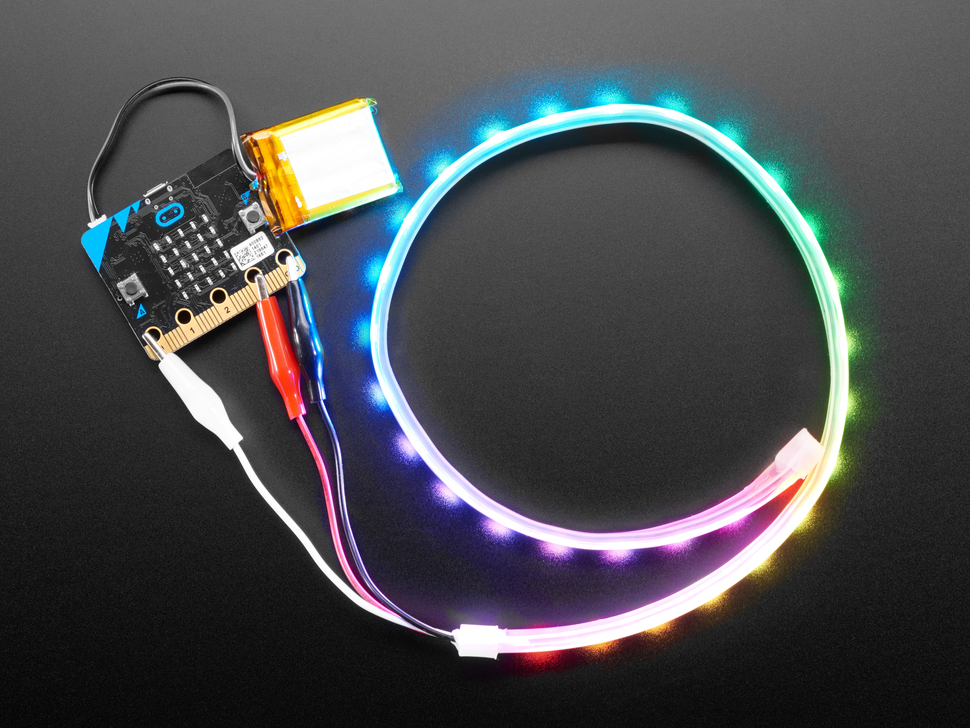 LED Strip with crocodile clips
LED Strip with crocodile clips

The Adafruit NeoPixel LED Strip is a flexible, programmable strip of individually addressable RGB LEDs. Each LED can be controlled separately to display a wide range of colors and patterns.
Ideal for creative and educational projects, these strips can be used to teach students about coding, electronics, and design. By using platforms like Microbits or Arduino, students can program the LED strip to create custom lighting effects, interactive displays, or even simple animations. Perfect for classroom activities, the NeoPixel LED Strip provides a vibrant and engaging way to explore technology and creativity.
 Microbit
Microbit

The BBC microbit is a pocket-sized codeable computer with motion detection, a built-in compass and Bluetooth technology.
The board measures 4 cm × 5 cm and has a processor, accelerometer and magnetometer sensors, Bluetooth and USB connectivity, a display consisting of 25 LEDs, two programmable buttons, and can be powered by either USB or an external battery pack.
The list of things you can program the Microbit to do is nearly endless. You can program the buttons, LEDs and different sensors to create games and turn the Microbit into things like a pedometer, a compass or even a musical instrument.
Where to buy
Microbits can be purchased from a number of online retailers and can be purchased with and without a USB cable and battery pack. They can also be purchased in bulk from some retailers.
Online retailers
| Unit | Lesson | Level | |
|---|---|---|---|
| Lesson | Microbit LED Strip | Quiz Challenge | Beginner |
| Lesson | LED Strip Clapper | Quiz Challenge | Beginner |
| Lesson | Microbit LED Strip Thermometer | Quiz Challenge | Beginner |
| Lesson | Shooting Stars | Quiz Challenge | Intermediate |
| Lesson | LED Flags | Quiz Challenge | Intermediate |
| Lesson | LED Stacking | Quiz Challenge | Advanced |
| Lesson | LED Strip Precision Game | Quiz Challenge | Advanced |
| Lesson | Microbit Lab | Advanced |
Extra Module

Designing and Building for the Future
Robotics Champions: Animate & Control Your Microbit Car!
 Designing and Building for the Future
Designing and Building for the Future
- Master the assembly and programming of Microbit Traffic Lights.
- Develop skills in creating interactive games using Microbit and STOP:bit Traffic Lights.
- Understand and apply the principles of pedestrian crossing simulations using MakeCode editor and micro:bit.
- Gain proficiency in building and programming a Move Motor Sensor Car.
- Learn to code a car to follow a line track and use ultrasonic sensors for object detection and avoidance.
- Assemble and operate a Microbit Traffic Lights Kit.
- Program a sequence of traffic lights using on/off and state methods.
- Create a traffic light reaction game, incorporating variables and reaction time measurements.
- Construct a pedestrian crossing simulation, incorporating button press detection and traffic light sequencing.
- Assemble and code a Move Motor Sensor Car, exploring its various sensors and capabilities.
- Program a Move Motor Car to follow a line track, adjusting code for optimal performance.
- Utilise ultrasonic sensors to enable a Move Motor Car to follow an object and avoid obstacles.
- Control a Move Motor Car using a Microbit as a remote controller, based on tilt detection.
- Code a set of traffic lights and a robot car to communicate and respond to each other's states.
Students will need to use one of these devices. If necessary, students can work in groups (ideally in a group of 2 or 3 students) and use one device between them.
 Chromebook/Laptop/PC
Chromebook/Laptop/PC
 Chromebooks, laptops, and PCs are crucial tools for coding and digital skills education. Chromebooks are ideal for web-based applications and collaborative projects, while laptops and PCs support a wider range of programming environments and software for more intensive tasks like software development and data analysis.
Chromebooks, laptops, and PCs are crucial tools for coding and digital skills education. Chromebooks are ideal for web-based applications and collaborative projects, while laptops and PCs support a wider range of programming environments and software for more intensive tasks like software development and data analysis.Equipped with full keyboards and the ability to run specialized coding software, these devices enable students to learn programming languages, debug code, and understand software architecture. Their versatility supports both individual learning and group projects, making them indispensable for developing critical digital and computational thinking skills in the classroom.
 Microbit
Microbit

The BBC microbit is a pocket-sized codeable computer with motion detection, a built-in compass and Bluetooth technology.
The board measures 4 cm × 5 cm and has a processor, accelerometer and magnetometer sensors, Bluetooth and USB connectivity, a display consisting of 25 LEDs, two programmable buttons, and can be powered by either USB or an external battery pack.
The list of things you can program the Microbit to do is nearly endless. You can program the buttons, LEDs and different sensors to create games and turn the Microbit into things like a pedometer, a compass or even a musical instrument.
Where to buy
Microbits can be purchased from a number of online retailers and can be purchased with and without a USB cable and battery pack. They can also be purchased in bulk from some retailers.
Online retailers
The equipment listed below is used in lessons in this course. Please note that these items can be shared among students if necessary.
 Microbit
Microbit

The BBC microbit is a pocket-sized codeable computer with motion detection, a built-in compass and Bluetooth technology.
The board measures 4 cm × 5 cm and has a processor, accelerometer and magnetometer sensors, Bluetooth and USB connectivity, a display consisting of 25 LEDs, two programmable buttons, and can be powered by either USB or an external battery pack.
The list of things you can program the Microbit to do is nearly endless. You can program the buttons, LEDs and different sensors to create games and turn the Microbit into things like a pedometer, a compass or even a musical instrument.
Where to buy
Microbits can be purchased from a number of online retailers and can be purchased with and without a USB cable and battery pack. They can also be purchased in bulk from some retailers.
Online retailers
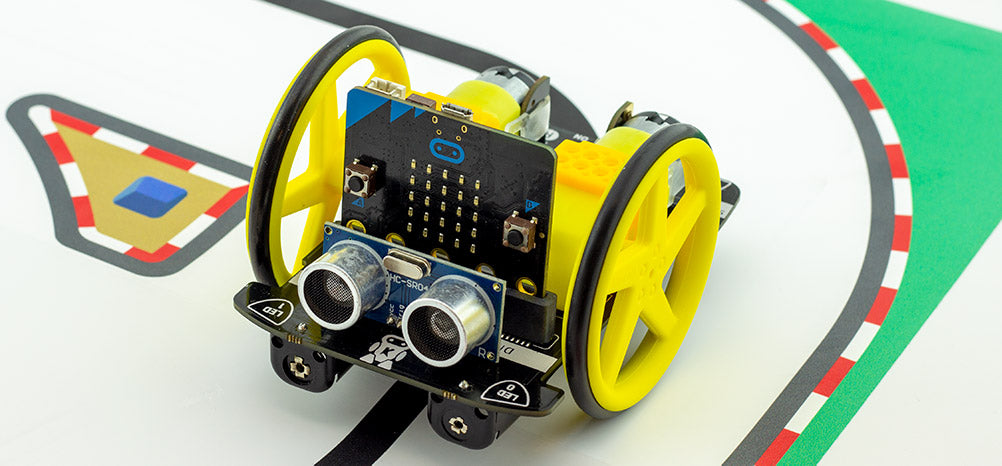 Move Motor Car
Move Motor Car

The Move Motor Car is a versatile, programmable vehicle that is powered and controlled by the micro:bit, a pocket-sized computer.
This car has motorized wheels and a variety of sensors, allowing students to create and test different robotics and coding projects. By connecting a micro:bit to the car, students can use the MakeCode platform to program the vehicle's movements, speed, and responses to sensor inputs. This provides an engaging and hands-on way for students to learn about coding, robotics, and engineering concepts.
Whether it's navigating through a maze, following a line on the ground, or responding to obstacles, the Move Motor Sensor Car offers endless opportunities for creativity and problem-solving. Perfect for classroom activities, it allows students to explore STEM concepts in an interactive and enjoyable way.
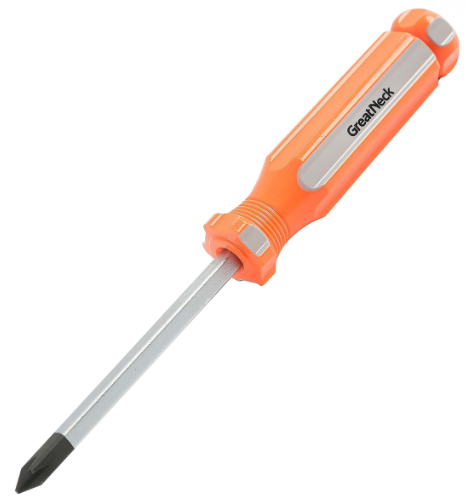 Phillips Screwdriver
Phillips Screwdriver

A Phillips screwdriver is a hand tool with a cross-shaped tip, designed to drive screws with a matching recessed cross or "Phillips" head. It's commonly used in a wide range of applications, including assembly and repair of appliances, electronics, and furniture. Essential for many classroom projects, it helps students learn practical skills and safely connect components.
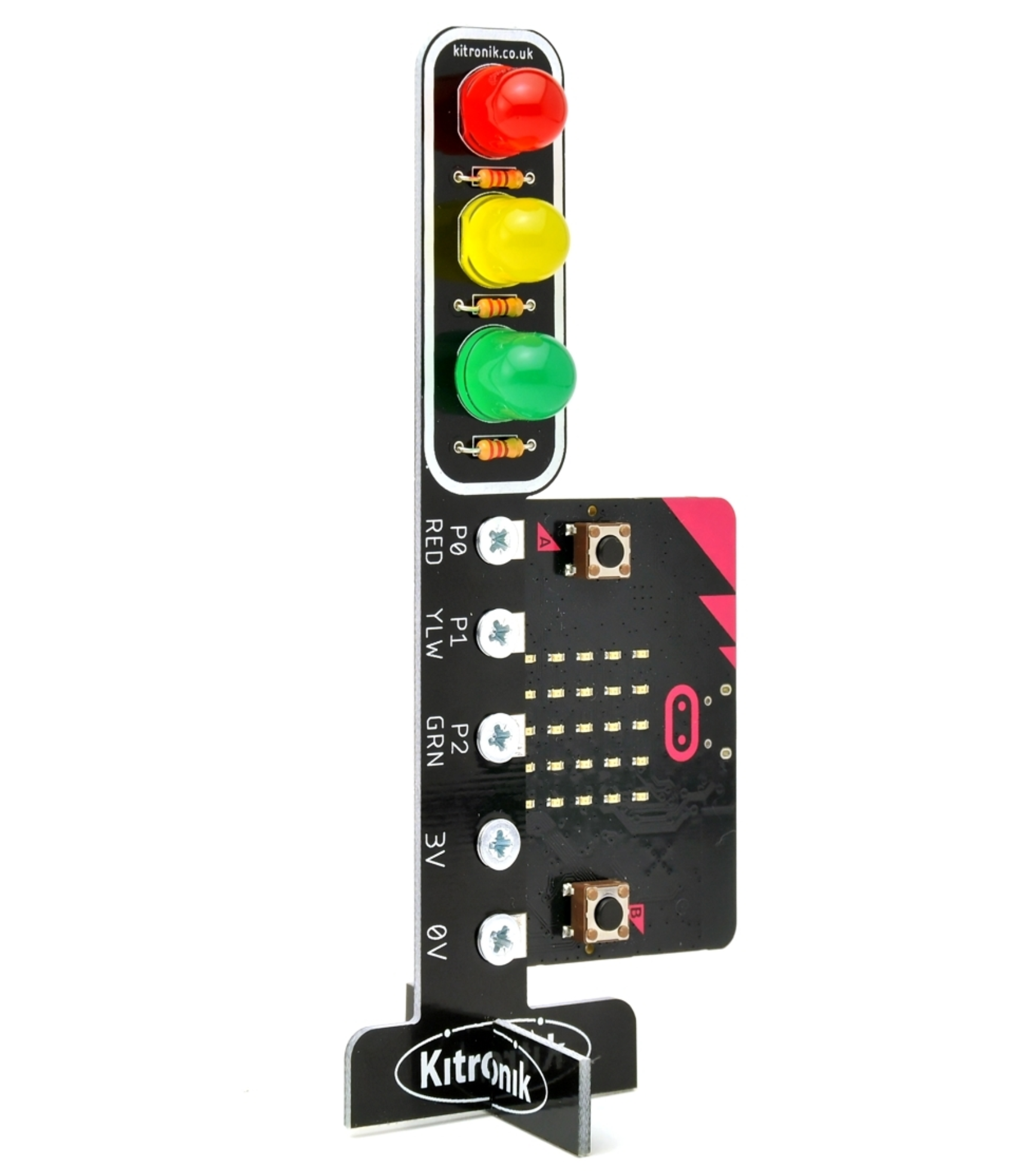 Traffic Lights Kit
Traffic Lights Kit
| Unit | Lesson | Level | |
|---|---|---|---|
| Lesson | Build your Traffic Lights | Quiz | Beginner |
| Lesson | Microbit Traffic Lights | Quiz Challenge | Beginner |
| Lesson | Traffic Light Reaction Game | Quiz Challenge | Beginner |
| Lesson | Pedestrian Crossing | Quiz Challenge | Beginner |
| Lesson | Build your Move Motor Sensor Car | Quiz Challenge | Intermediate |
| Lesson | Line Following Car | Quiz Challenge | Intermediate |
| Lesson | Autonomous Car | Quiz Challenge | Intermediate |
| Lesson | Tilt Remote Control Car | Quiz Challenge | Advanced |
| Lesson | Traffic Lights and Car Communication | Quiz Challenge | Advanced |
Extra Module
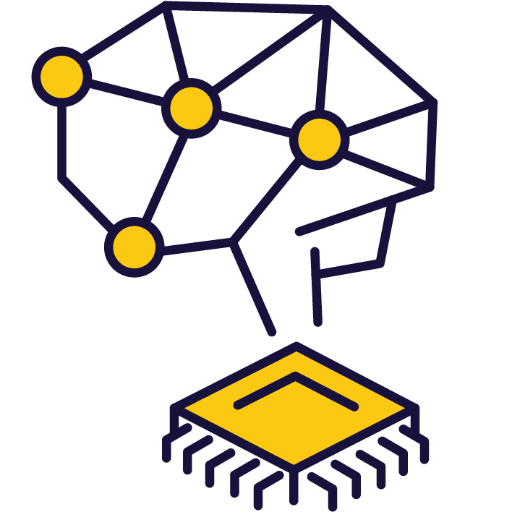
Discovering Artificial Intelligence
Discover AI and learn how to program it using Scratch.
 Discovering Artificial Intelligence
Discovering Artificial Intelligence
- Understand the fundamentals of AI models, their types, applications, limitations, and ethical considerations.
- Develop an image model using Google's Teachable Machine and apply it in a practical project.
- Create an interactive game using Scratch and Google Teachable Machine, incorporating elements of randomisation and conditionals.
- Design and develop a pose model using Google's Teachable Machine, and apply it in a space game project.
- Conceptualise, plan, and execute an original AI Scratch project, demonstrating creativity, problem-solving, and application of AI knowledge.
- Understand and explain the function, types, applications, and limitations of AI models, including ethical considerations.
- Create an image model using Google's Teachable Machine for a rock, paper, scissors game.
- Develop a Rock, Paper, Scissors game using Scratch and Google Teachable Machine, incorporating variables, randomisation, and conditionals.
- Create a pose model using Google's Teachable Machine for a space game, understanding the importance of testing and adjusting the model.
- Conceptualise, plan, and build a unique AI Scratch project, demonstrating creativity, problem-solving, and the ability to seek and incorporate feedback.
Students will need to use one of these devices. If necessary, students can work in groups (ideally in a group of 2 or 3 students) and use one device between them.
 Chromebook/Laptop/PC
Chromebook/Laptop/PC
 Chromebooks, laptops, and PCs are crucial tools for coding and digital skills education. Chromebooks are ideal for web-based applications and collaborative projects, while laptops and PCs support a wider range of programming environments and software for more intensive tasks like software development and data analysis.
Chromebooks, laptops, and PCs are crucial tools for coding and digital skills education. Chromebooks are ideal for web-based applications and collaborative projects, while laptops and PCs support a wider range of programming environments and software for more intensive tasks like software development and data analysis.Equipped with full keyboards and the ability to run specialized coding software, these devices enable students to learn programming languages, debug code, and understand software architecture. Their versatility supports both individual learning and group projects, making them indispensable for developing critical digital and computational thinking skills in the classroom.
 iPad/Tablet
iPad/Tablet

iPads and tablets are versatile, portable computing devices that offer a wide range of educational applications in the classroom. Featuring touch-sensitive screens ranging from 7 to 13 inches, these devices allow students and teachers to interact directly with content through touch, swipe, and voice commands.
The equipment listed below is used in lessons in this course. Please note that these items can be shared among students if necessary.
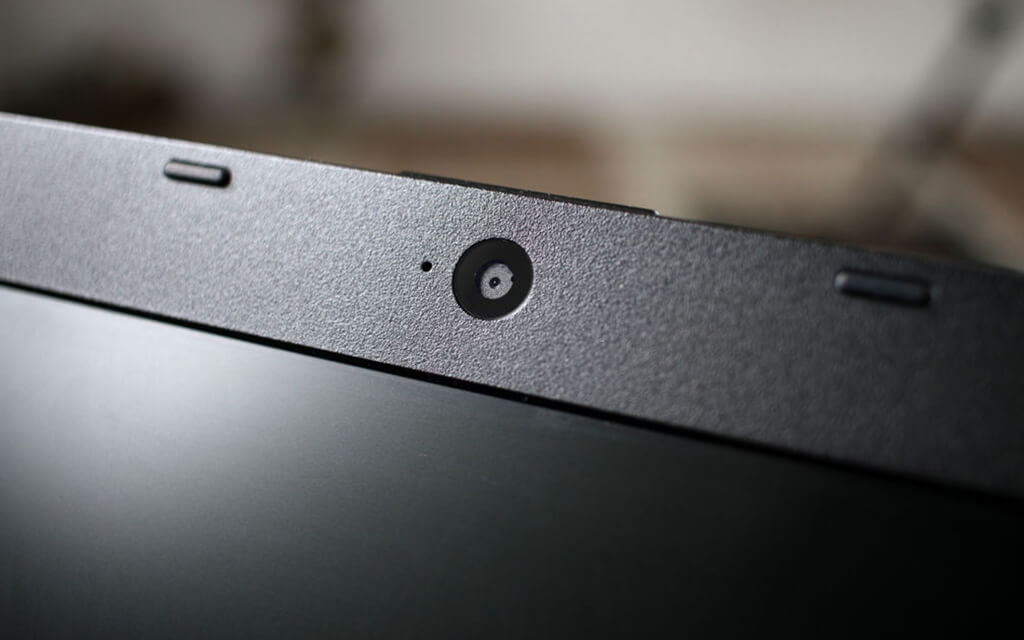 Webcam/camera
Webcam/camera
| Unit | Lesson | Level | |
|---|---|---|---|
| Lessons | An Introduction to AI Models | Quiz | Advanced |
| Lessons | Create an Image Model | Quiz | Advanced |
| Lesson | Scratch AI Rock, Paper, Scissors Game | Quiz Challenge | Intermediate |
| Lessons | Create a Pose Model | Quiz | Advanced |
| Lessons | Scratch AI Pose Space Game | Quiz Challenge | Advanced |
| Lesson | Crafting Your Own AI Project | Advanced |
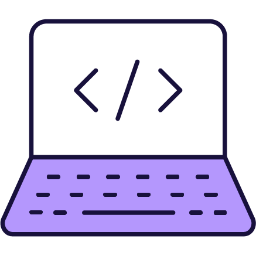 Introduction to Scratch Programming
Introduction to Scratch Programming
- Understand the concept of coding and its applications.
- Master the basics of Scratch, including navigation, sprite manipulation, value changes in blocks, loop creation, and backdrop addition.
- Create and manage a personal Scratch account for project saving, sharing, and community interaction.
- Apply Scratch programming skills to create a basic game, incorporating sprite movement, backdrop usage, and sensing blocks.
- Develop problem-solving skills and creativity through coding projects and challenges.
- Understand the concept of coding and its applications.
- Navigate the Scratch website and manipulate sprites and blocks.
- Create and manage a personal Scratch account.
- Develop a basic game using Scratch, incorporating movement and sensing blocks.
- Apply knowledge of loops, values, and backdrops in Scratch projects.
Students will need to use one of these devices. If necessary, students can work in groups (ideally in a group of 2 or 3 students) and use one device between them.
 Chromebook/Laptop/PC
Chromebook/Laptop/PC
 Chromebooks, laptops, and PCs are crucial tools for coding and digital skills education. Chromebooks are ideal for web-based applications and collaborative projects, while laptops and PCs support a wider range of programming environments and software for more intensive tasks like software development and data analysis.
Chromebooks, laptops, and PCs are crucial tools for coding and digital skills education. Chromebooks are ideal for web-based applications and collaborative projects, while laptops and PCs support a wider range of programming environments and software for more intensive tasks like software development and data analysis.Equipped with full keyboards and the ability to run specialized coding software, these devices enable students to learn programming languages, debug code, and understand software architecture. Their versatility supports both individual learning and group projects, making them indispensable for developing critical digital and computational thinking skills in the classroom.
 iPad/Tablet
iPad/Tablet

iPads and tablets are versatile, portable computing devices that offer a wide range of educational applications in the classroom. Featuring touch-sensitive screens ranging from 7 to 13 inches, these devices allow students and teachers to interact directly with content through touch, swipe, and voice commands.
| Unit | Lesson | Level | |
|---|---|---|---|
| What is Coding? | Introduction to Coding | Quiz | Beginner |
| What is Coding? | Scratch Tutorial | Quiz Challenge | Beginner |
| Lesson | Paddle Ball Game | Quiz Challenge | Beginner |
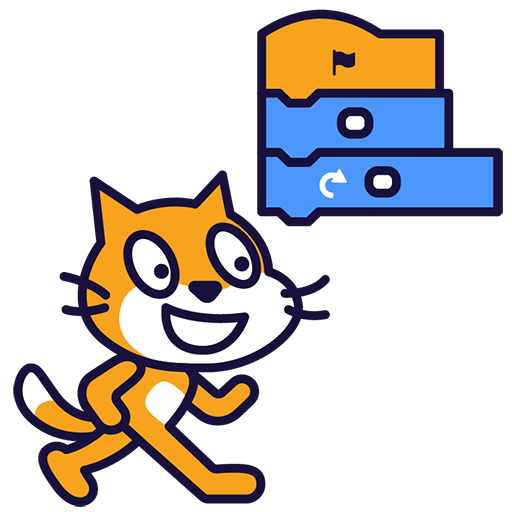 Coding Projects with Scratch
Coding Projects with Scratch
- Develop skills in using Scratch to create interactive projects, including games and language translators.
- Understand and apply coding principles such as variables, loops, and collision detection.
- Gain proficiency in controlling and animating sprites, and manipulating their properties.
- Apply creativity and problem-solving skills in designing and implementing unique game features.
- Understand and implement complex concepts such as autonomous navigation and game physics.
- Develop a language translator using Scratch, incorporating the Translate and Text to Speech extensions, variables, and interactive elements.
- Create an engaging 'Shark Swim' game using Scratch, mastering sprite control, animation, collision detection, and game loop establishment.
- Program an autonomous car using Scratch, understanding the workings of autonomous cars, sprite manipulation, track design, and autonomous navigation.
- Code a pattern creator using Scratch, utilising the pen tool, variables, and pen colour and size manipulation to create complex patterns.
- Develop an interactive 'Attack of the Dots' game using Scratch, controlling a coloured disc, cloning attacking dots, and detecting dot colours.
- Create a 'Rocket Lander' game using Scratch, programming gravity, rocket movement, animations for thrust and explosion, and a fuel limit.
- Design a platformer game using Scratch, creating characters and platforms, and writing code for character movements, gravity application, and effects like jumping and trailing.
- Engage in build battles, demonstrating problem-solving skills and creativity in tackling code challenges using Scratch.
Students will need to use one of these devices. If necessary, students can work in groups (ideally in a group of 2 or 3 students) and use one device between them.
 Chromebook/Laptop/PC
Chromebook/Laptop/PC
 Chromebooks, laptops, and PCs are crucial tools for coding and digital skills education. Chromebooks are ideal for web-based applications and collaborative projects, while laptops and PCs support a wider range of programming environments and software for more intensive tasks like software development and data analysis.
Chromebooks, laptops, and PCs are crucial tools for coding and digital skills education. Chromebooks are ideal for web-based applications and collaborative projects, while laptops and PCs support a wider range of programming environments and software for more intensive tasks like software development and data analysis.Equipped with full keyboards and the ability to run specialized coding software, these devices enable students to learn programming languages, debug code, and understand software architecture. Their versatility supports both individual learning and group projects, making them indispensable for developing critical digital and computational thinking skills in the classroom.
 iPad/Tablet
iPad/Tablet

iPads and tablets are versatile, portable computing devices that offer a wide range of educational applications in the classroom. Featuring touch-sensitive screens ranging from 7 to 13 inches, these devices allow students and teachers to interact directly with content through touch, swipe, and voice commands.
| Unit | Lesson | Level | |
|---|---|---|---|
| Lesson | Translate | Quiz Challenge | Beginner |
| Lesson | Shark Swim | Quiz Challenge | Beginner |
| Lesson | Autonomous Car | Quiz Challenge | Intermediate |
| Lesson | Pattern Creator | Quiz Challenge | Intermediate |
| Lesson | Attack of the Dots | Quiz Challenge | Intermediate |
| Lesson | Rocket Lander | Quiz Challenge | Advanced |
| Lesson | Scratch Platformer | Quiz Challenge | Advanced |
| Lesson | Build Battles | Advanced |
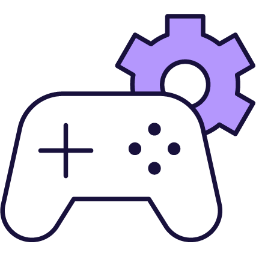 Game Development
Game Development
- Master the use of MakeCode Arcade to create and modify game projects.
- Understand and apply coding concepts such as sprites, coordinates, and game logic.
- Design and control game characters, objects, and environments.
- Develop problem-solving skills through coding challenges and game modifications.
- Collaborate effectively in teams to brainstorm and develop game projects.
- Create and control game sprites using MakeCode Arcade.
- Design and implement game mechanics such as scoring systems, timers, and game over conditions.
- Program sprite interactions including overlaps, movements, and projectile firing.
- Develop a platform game with elements such as gravity, jumping, and danger tiles.
- Design and execute a group project, demonstrating creativity and teamwork.
Students will need to use one of these devices. If necessary, students can work in groups (ideally in a group of 2 or 3 students) and use one device between them.
 Chromebook/Laptop/PC
Chromebook/Laptop/PC
 Chromebooks, laptops, and PCs are crucial tools for coding and digital skills education. Chromebooks are ideal for web-based applications and collaborative projects, while laptops and PCs support a wider range of programming environments and software for more intensive tasks like software development and data analysis.
Chromebooks, laptops, and PCs are crucial tools for coding and digital skills education. Chromebooks are ideal for web-based applications and collaborative projects, while laptops and PCs support a wider range of programming environments and software for more intensive tasks like software development and data analysis.Equipped with full keyboards and the ability to run specialized coding software, these devices enable students to learn programming languages, debug code, and understand software architecture. Their versatility supports both individual learning and group projects, making them indispensable for developing critical digital and computational thinking skills in the classroom.
 iPad/Tablet
iPad/Tablet

iPads and tablets are versatile, portable computing devices that offer a wide range of educational applications in the classroom. Featuring touch-sensitive screens ranging from 7 to 13 inches, these devices allow students and teachers to interact directly with content through touch, swipe, and voice commands.
| Unit | Lesson | Level | |
|---|---|---|---|
| Lesson | First Arcade Project | Quiz Challenge | Beginner |
| Lesson | Monkey Mayhem | Quiz Challenge | Beginner |
| Lesson | Space Shooter | Quiz Challenge | Beginner |
| Lesson | Platform Place | Quiz Challenge | Intermediate |
| Lesson | Arcade Build Battles | Intermediate | |
| Lesson | Galaxy Ghosts | Quiz Challenge | Advanced |
| Lesson | Donut Rush | Quiz Challenge | Advanced |
| Lesson | Game Lab | Advanced |
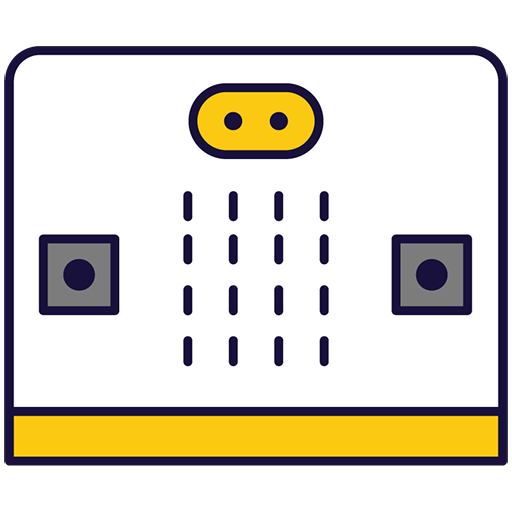 Coding Projects with Microbits
Coding Projects with Microbits
- Master the basics of microbits, including creating projects, writing and deleting code, and programming microbits to perform various tasks.
- Develop a reaction timer game using microbits, enhancing skills in creating variables, adding random delays, and recording reaction times.
- Design a microbits alarm system, applying knowledge of functions, variables, and if-else conditions.
- Create a 'Microbit Finder' using radio signals, learning to set up a radio group, send and receive messages, and display signal strength.
- Design a microbits weather station, demonstrating understanding of sensor readings, button inputs, and basic microbit functions.
- Program a microbit to display messages, react to button presses, show icons, play melodies, and respond to movement.
- Design and code a reaction timer game using a microbit, incorporating elements such as random delays and variables to record reaction times.
- Create a microbit-based alarm system, utilising sensors to detect movement and sound, and programming the system to activate when thresholds are crossed.
- Develop a 'Microbit Finder' using radio signals to detect proximity between two microbits, including setting up a radio group, creating variables, and sending/receiving messages.
- Design a microbit weather station that displays sensor readings based on button presses, including temperature, light level, sound level, and acceleration.
- Transform a microbit into a compass and thermometer, programming the buttons to use the built-in sensors.
- Program a microbit to act as a pet with varying emotions, responding to different interactions.
- Develop a microbit voting system, programming microbits to cast votes, tally the votes, and reset the voting system, with an added security feature.
Students will need to use one of these devices. If necessary, students can work in groups (ideally in a group of 2 or 3 students) and use one device between them.
 Chromebook/Laptop/PC
Chromebook/Laptop/PC
 Chromebooks, laptops, and PCs are crucial tools for coding and digital skills education. Chromebooks are ideal for web-based applications and collaborative projects, while laptops and PCs support a wider range of programming environments and software for more intensive tasks like software development and data analysis.
Chromebooks, laptops, and PCs are crucial tools for coding and digital skills education. Chromebooks are ideal for web-based applications and collaborative projects, while laptops and PCs support a wider range of programming environments and software for more intensive tasks like software development and data analysis.Equipped with full keyboards and the ability to run specialized coding software, these devices enable students to learn programming languages, debug code, and understand software architecture. Their versatility supports both individual learning and group projects, making them indispensable for developing critical digital and computational thinking skills in the classroom.
The equipment listed below is used in lessons in this course. Please note that these items can be shared among students if necessary.
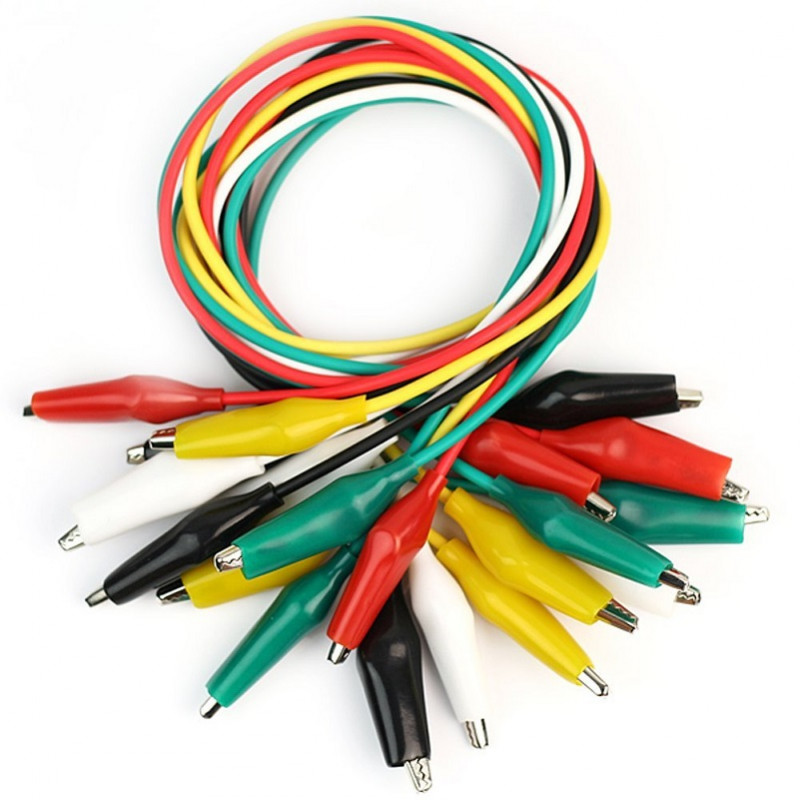 Crocodile clips
Crocodile clips
 Microbit
Microbit

The BBC microbit is a pocket-sized codeable computer with motion detection, a built-in compass and Bluetooth technology.
The board measures 4 cm × 5 cm and has a processor, accelerometer and magnetometer sensors, Bluetooth and USB connectivity, a display consisting of 25 LEDs, two programmable buttons, and can be powered by either USB or an external battery pack.
The list of things you can program the Microbit to do is nearly endless. You can program the buttons, LEDs and different sensors to create games and turn the Microbit into things like a pedometer, a compass or even a musical instrument.
Where to buy
Microbits can be purchased from a number of online retailers and can be purchased with and without a USB cable and battery pack. They can also be purchased in bulk from some retailers.
Online retailers
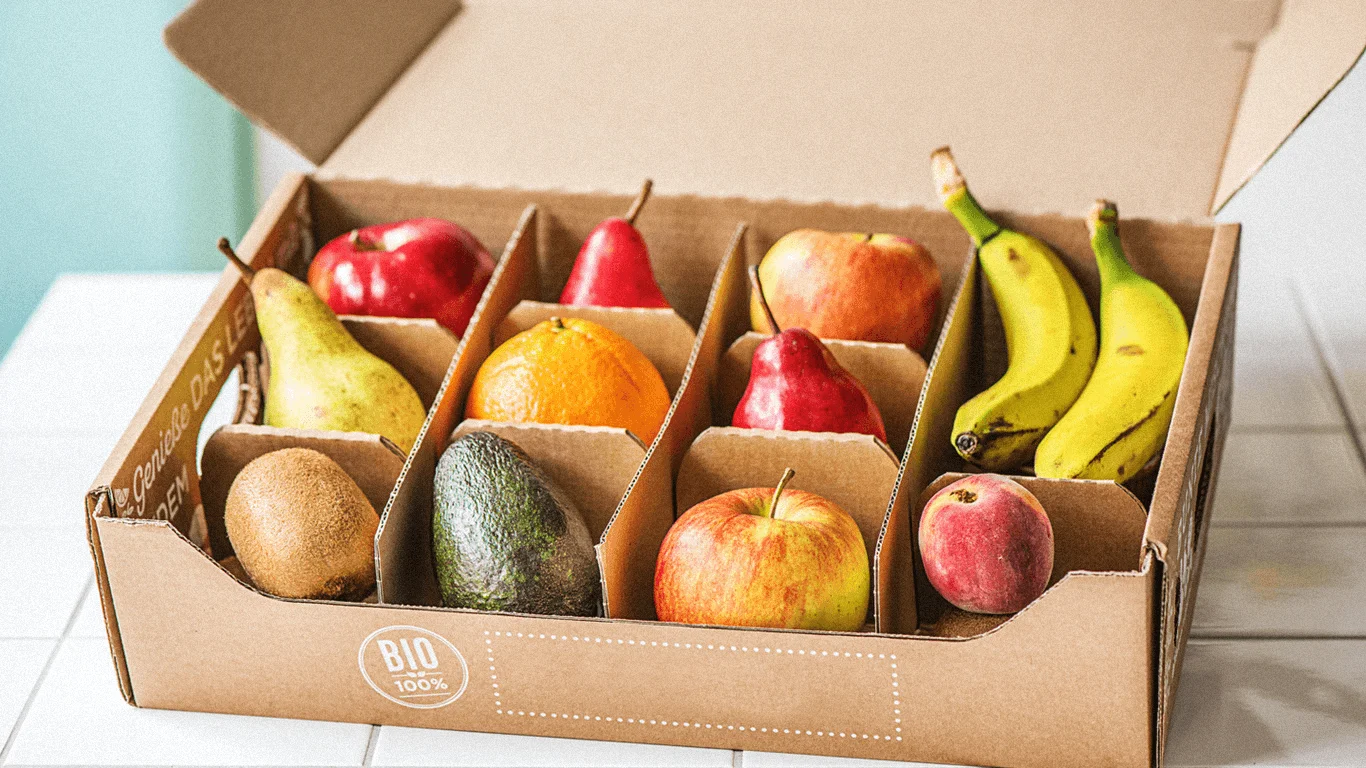 Some fruit & vegetables
Some fruit & vegetables
| Unit | Lesson | Level | |
|---|---|---|---|
| Lesson | Exploring Microbits | Quiz | Beginner |
| Lesson | Microbit Step Counter | Quiz Challenge | Beginner |
| Lesson | Reaction Timer | Quiz Challenge | Beginner |
| Lesson | Microbit Fruit and Veg Piano | Quiz Challenge | Intermediate |
| Lesson | Designing a Microbits Weather Station | Quiz Challenge | Intermediate |
| Lesson | Microbit Compass and Thermometer | Quiz Challenge | Intermediate |
| Lesson | Microbit Pet | Quiz Challenge | Advanced |
| Lesson | Microbit Lab | Advanced |
Extra Module

Exploring Electronics and Light
Microbit Makers: Code Light Shows & Interactive Projects!
 Exploring Electronics and Light
Exploring Electronics and Light
- Understand and apply the principles of programming LED strips using Microbit projects.
- Develop skills to create interactive LED displays that respond to sound and temperature changes.
- Design and implement a game using LED strip and Microbit programming.
- Enhance creativity and problem-solving skills through the design of LED flags and stacking effects.
- Apply teamwork and project management skills in brainstorming and executing a group Microbit project.
- Programme a strip of LEDs to display colourful patterns using Microbit.
- Design and implement an LED Strip Clapper that responds to sound, specifically a clap, to turn on and off.
- Convert an LED strip into a visual thermometer that lights up and changes colour according to the current temperature.
- Create a voice-activated 'Shooting Stars' display using an LED strip and Microbit.
- Design and code tricolour flags using LED strips.
- Create a stacking effect on an LED strip, controlled by Microbit, with the ability to increase and decrease the size of the stack.
- Develop an LED Strip Precision Game that involves timing and accuracy.
- Brainstorm, design, and implement a simple Microbit project in a team, demonstrating creativity and teamwork.
Students will need to use one of these devices. If necessary, students can work in groups (ideally in a group of 2 or 3 students) and use one device between them.
 Chromebook/Laptop/PC
Chromebook/Laptop/PC
 Chromebooks, laptops, and PCs are crucial tools for coding and digital skills education. Chromebooks are ideal for web-based applications and collaborative projects, while laptops and PCs support a wider range of programming environments and software for more intensive tasks like software development and data analysis.
Chromebooks, laptops, and PCs are crucial tools for coding and digital skills education. Chromebooks are ideal for web-based applications and collaborative projects, while laptops and PCs support a wider range of programming environments and software for more intensive tasks like software development and data analysis.Equipped with full keyboards and the ability to run specialized coding software, these devices enable students to learn programming languages, debug code, and understand software architecture. Their versatility supports both individual learning and group projects, making them indispensable for developing critical digital and computational thinking skills in the classroom.
The equipment listed below is used in lessons in this course. Please note that these items can be shared among students if necessary.
 LED Strip with crocodile clips
LED Strip with crocodile clips

The Adafruit NeoPixel LED Strip is a flexible, programmable strip of individually addressable RGB LEDs. Each LED can be controlled separately to display a wide range of colors and patterns.
Ideal for creative and educational projects, these strips can be used to teach students about coding, electronics, and design. By using platforms like Microbits or Arduino, students can program the LED strip to create custom lighting effects, interactive displays, or even simple animations. Perfect for classroom activities, the NeoPixel LED Strip provides a vibrant and engaging way to explore technology and creativity.
 Microbit
Microbit

The BBC microbit is a pocket-sized codeable computer with motion detection, a built-in compass and Bluetooth technology.
The board measures 4 cm × 5 cm and has a processor, accelerometer and magnetometer sensors, Bluetooth and USB connectivity, a display consisting of 25 LEDs, two programmable buttons, and can be powered by either USB or an external battery pack.
The list of things you can program the Microbit to do is nearly endless. You can program the buttons, LEDs and different sensors to create games and turn the Microbit into things like a pedometer, a compass or even a musical instrument.
Where to buy
Microbits can be purchased from a number of online retailers and can be purchased with and without a USB cable and battery pack. They can also be purchased in bulk from some retailers.
Online retailers
| Unit | Lesson | Level | |
|---|---|---|---|
| Lesson | Microbit LED Strip | Quiz Challenge | Beginner |
| Lesson | LED Strip Clapper | Quiz Challenge | Beginner |
| Lesson | Microbit LED Strip Thermometer | Quiz Challenge | Beginner |
| Lesson | Shooting Stars | Quiz Challenge | Intermediate |
| Lesson | LED Flags | Quiz Challenge | Intermediate |
| Lesson | LED Stacking | Quiz Challenge | Advanced |
| Lesson | LED Strip Precision Game | Quiz Challenge | Advanced |
| Lesson | Microbit Lab | Advanced |
Extra Module

Designing and Building for the Future
Robotics Champions: Animate & Control Your Microbit Car!
 Designing and Building for the Future
Designing and Building for the Future
- Master the assembly and programming of Microbit Traffic Lights.
- Develop skills in creating interactive games using Microbit and STOP:bit Traffic Lights.
- Understand and apply the principles of pedestrian crossing simulations using MakeCode editor and micro:bit.
- Gain proficiency in building and programming a Move Motor Sensor Car.
- Learn to code a car to follow a line track and use ultrasonic sensors for object detection and avoidance.
- Assemble and operate a Microbit Traffic Lights Kit.
- Program a sequence of traffic lights using on/off and state methods.
- Create a traffic light reaction game, incorporating variables and reaction time measurements.
- Construct a pedestrian crossing simulation, incorporating button press detection and traffic light sequencing.
- Assemble and code a Move Motor Sensor Car, exploring its various sensors and capabilities.
- Program a Move Motor Car to follow a line track, adjusting code for optimal performance.
- Utilise ultrasonic sensors to enable a Move Motor Car to follow an object and avoid obstacles.
- Control a Move Motor Car using a Microbit as a remote controller, based on tilt detection.
- Code a set of traffic lights and a robot car to communicate and respond to each other's states.
Students will need to use one of these devices. If necessary, students can work in groups (ideally in a group of 2 or 3 students) and use one device between them.
 Chromebook/Laptop/PC
Chromebook/Laptop/PC
 Chromebooks, laptops, and PCs are crucial tools for coding and digital skills education. Chromebooks are ideal for web-based applications and collaborative projects, while laptops and PCs support a wider range of programming environments and software for more intensive tasks like software development and data analysis.
Chromebooks, laptops, and PCs are crucial tools for coding and digital skills education. Chromebooks are ideal for web-based applications and collaborative projects, while laptops and PCs support a wider range of programming environments and software for more intensive tasks like software development and data analysis.Equipped with full keyboards and the ability to run specialized coding software, these devices enable students to learn programming languages, debug code, and understand software architecture. Their versatility supports both individual learning and group projects, making them indispensable for developing critical digital and computational thinking skills in the classroom.
 Microbit
Microbit

The BBC microbit is a pocket-sized codeable computer with motion detection, a built-in compass and Bluetooth technology.
The board measures 4 cm × 5 cm and has a processor, accelerometer and magnetometer sensors, Bluetooth and USB connectivity, a display consisting of 25 LEDs, two programmable buttons, and can be powered by either USB or an external battery pack.
The list of things you can program the Microbit to do is nearly endless. You can program the buttons, LEDs and different sensors to create games and turn the Microbit into things like a pedometer, a compass or even a musical instrument.
Where to buy
Microbits can be purchased from a number of online retailers and can be purchased with and without a USB cable and battery pack. They can also be purchased in bulk from some retailers.
Online retailers
The equipment listed below is used in lessons in this course. Please note that these items can be shared among students if necessary.
 Microbit
Microbit

The BBC microbit is a pocket-sized codeable computer with motion detection, a built-in compass and Bluetooth technology.
The board measures 4 cm × 5 cm and has a processor, accelerometer and magnetometer sensors, Bluetooth and USB connectivity, a display consisting of 25 LEDs, two programmable buttons, and can be powered by either USB or an external battery pack.
The list of things you can program the Microbit to do is nearly endless. You can program the buttons, LEDs and different sensors to create games and turn the Microbit into things like a pedometer, a compass or even a musical instrument.
Where to buy
Microbits can be purchased from a number of online retailers and can be purchased with and without a USB cable and battery pack. They can also be purchased in bulk from some retailers.
Online retailers
 Move Motor Car
Move Motor Car

The Move Motor Car is a versatile, programmable vehicle that is powered and controlled by the micro:bit, a pocket-sized computer.
This car has motorized wheels and a variety of sensors, allowing students to create and test different robotics and coding projects. By connecting a micro:bit to the car, students can use the MakeCode platform to program the vehicle's movements, speed, and responses to sensor inputs. This provides an engaging and hands-on way for students to learn about coding, robotics, and engineering concepts.
Whether it's navigating through a maze, following a line on the ground, or responding to obstacles, the Move Motor Sensor Car offers endless opportunities for creativity and problem-solving. Perfect for classroom activities, it allows students to explore STEM concepts in an interactive and enjoyable way.
 Phillips Screwdriver
Phillips Screwdriver

A Phillips screwdriver is a hand tool with a cross-shaped tip, designed to drive screws with a matching recessed cross or "Phillips" head. It's commonly used in a wide range of applications, including assembly and repair of appliances, electronics, and furniture. Essential for many classroom projects, it helps students learn practical skills and safely connect components.
 Traffic Lights Kit
Traffic Lights Kit
| Unit | Lesson | Level | |
|---|---|---|---|
| Lesson | Build your Traffic Lights | Quiz | Beginner |
| Lesson | Microbit Traffic Lights | Quiz Challenge | Beginner |
| Lesson | Traffic Light Reaction Game | Quiz Challenge | Beginner |
| Lesson | Pedestrian Crossing | Quiz Challenge | Beginner |
| Lesson | Build your Move Motor Sensor Car | Quiz Challenge | Intermediate |
| Lesson | Line Following Car | Quiz Challenge | Intermediate |
| Lesson | Autonomous Car | Quiz Challenge | Intermediate |
| Lesson | Tilt Remote Control Car | Quiz Challenge | Advanced |
| Lesson | Traffic Lights and Car Communication | Quiz Challenge | Advanced |
Extra Module

Discovering Artificial Intelligence
Discover AI and learn how to program it using Scratch.
 Discovering Artificial Intelligence
Discovering Artificial Intelligence
- Understand the fundamentals of AI models, their types, applications, limitations, and ethical considerations.
- Develop an image model using Google's Teachable Machine and apply it in a practical project.
- Create an interactive game using Scratch and Google Teachable Machine, incorporating elements of randomisation and conditionals.
- Design and develop a pose model using Google's Teachable Machine, and apply it in a space game project.
- Conceptualise, plan, and execute an original AI Scratch project, demonstrating creativity, problem-solving, and application of AI knowledge.
- Understand and explain the function, types, applications, and limitations of AI models, including ethical considerations.
- Create an image model using Google's Teachable Machine for a rock, paper, scissors game.
- Develop a Rock, Paper, Scissors game using Scratch and Google Teachable Machine, incorporating variables, randomisation, and conditionals.
- Create a pose model using Google's Teachable Machine for a space game, understanding the importance of testing and adjusting the model.
- Conceptualise, plan, and build a unique AI Scratch project, demonstrating creativity, problem-solving, and the ability to seek and incorporate feedback.
Students will need to use one of these devices. If necessary, students can work in groups (ideally in a group of 2 or 3 students) and use one device between them.
 Chromebook/Laptop/PC
Chromebook/Laptop/PC
 Chromebooks, laptops, and PCs are crucial tools for coding and digital skills education. Chromebooks are ideal for web-based applications and collaborative projects, while laptops and PCs support a wider range of programming environments and software for more intensive tasks like software development and data analysis.
Chromebooks, laptops, and PCs are crucial tools for coding and digital skills education. Chromebooks are ideal for web-based applications and collaborative projects, while laptops and PCs support a wider range of programming environments and software for more intensive tasks like software development and data analysis.Equipped with full keyboards and the ability to run specialized coding software, these devices enable students to learn programming languages, debug code, and understand software architecture. Their versatility supports both individual learning and group projects, making them indispensable for developing critical digital and computational thinking skills in the classroom.
 iPad/Tablet
iPad/Tablet

iPads and tablets are versatile, portable computing devices that offer a wide range of educational applications in the classroom. Featuring touch-sensitive screens ranging from 7 to 13 inches, these devices allow students and teachers to interact directly with content through touch, swipe, and voice commands.
The equipment listed below is used in lessons in this course. Please note that these items can be shared among students if necessary.
 Webcam/camera
Webcam/camera
| Unit | Lesson | Level | |
|---|---|---|---|
| Lessons | An Introduction to AI Models | Quiz | Advanced |
| Lessons | Create an Image Model | Quiz | Advanced |
| Lesson | Scratch AI Rock, Paper, Scissors Game | Quiz Challenge | Intermediate |
| Lessons | Create a Pose Model | Quiz | Advanced |
| Lessons | Scratch AI Pose Space Game | Quiz Challenge | Advanced |
| Lesson | Crafting Your Own AI Project | Advanced |
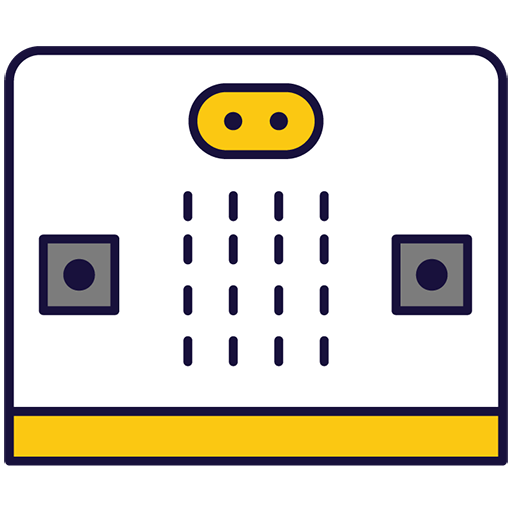 Introduction to Microbit Programming
Introduction to Microbit Programming
- Understand the fundamentals of microbits and their programming.
- Develop proficiency in creating, adding, and deleting code in the project editor.
- Gain skills in programming microbits to display messages, react to button presses, show icons, play melodies, and respond to movement.
- Design and create a reaction timer game using a Microbit.
- Learn to create variables, store time stamps, and record a player's reaction time in a game.
- Understand and utilise the project editor on the MakeCode for Microbit website.
- Create, add, and delete code to program a Microbit to display messages, react to button presses, and play melodies.
- Connect a Microbit to a computer and upload the programmed code.
- Design and create a reaction timer game using a Microbit, incorporating random visual prompts.
- Use variables to store time stamps and record a player's reaction time in the game.
Students will need to use one of these devices. If necessary, students can work in groups (ideally in a group of 2 or 3 students) and use one device between them.
 Chromebook/Laptop/PC
Chromebook/Laptop/PC
 Chromebooks, laptops, and PCs are crucial tools for coding and digital skills education. Chromebooks are ideal for web-based applications and collaborative projects, while laptops and PCs support a wider range of programming environments and software for more intensive tasks like software development and data analysis.
Chromebooks, laptops, and PCs are crucial tools for coding and digital skills education. Chromebooks are ideal for web-based applications and collaborative projects, while laptops and PCs support a wider range of programming environments and software for more intensive tasks like software development and data analysis.Equipped with full keyboards and the ability to run specialized coding software, these devices enable students to learn programming languages, debug code, and understand software architecture. Their versatility supports both individual learning and group projects, making them indispensable for developing critical digital and computational thinking skills in the classroom.
The equipment listed below is used in lessons in this course. Please note that these items can be shared among students if necessary.
 Microbit
Microbit

The BBC microbit is a pocket-sized codeable computer with motion detection, a built-in compass and Bluetooth technology.
The board measures 4 cm × 5 cm and has a processor, accelerometer and magnetometer sensors, Bluetooth and USB connectivity, a display consisting of 25 LEDs, two programmable buttons, and can be powered by either USB or an external battery pack.
The list of things you can program the Microbit to do is nearly endless. You can program the buttons, LEDs and different sensors to create games and turn the Microbit into things like a pedometer, a compass or even a musical instrument.
Where to buy
Microbits can be purchased from a number of online retailers and can be purchased with and without a USB cable and battery pack. They can also be purchased in bulk from some retailers.
Online retailers
| Unit | Lesson | Level | |
|---|---|---|---|
| Lesson | Exploring Microbits | Quiz | Beginner |
| Lesson | Reaction Timer | Quiz Challenge | Beginner |
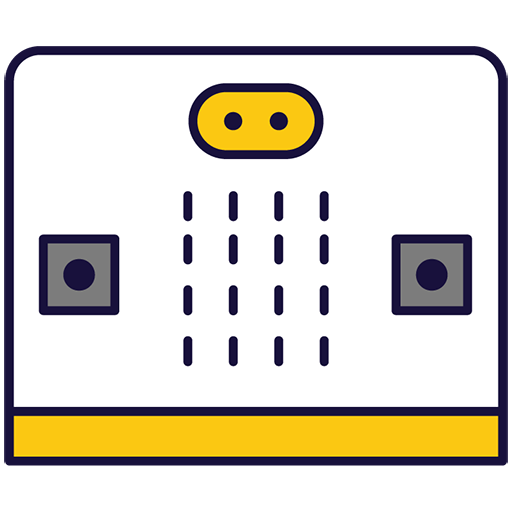 Applied Microbit Programming
Applied Microbit Programming
- Develop proficiency in creating interactive games using Microbit programming.
- Understand and utilise various sensors on the Microbit for different applications.
- Gain skills in creating multi-device IoT networks using Microbits.
- Master the use of Microbit's radio feature for sending and receiving messages.
- Enhance problem-solving and critical thinking skills through programming challenges.
- Develop a simple guessing game using Microbit, incorporating variables, button inputs, and game logic.
- Investigate and understand the functionality of different sensors on the Microbit.
- Create a time-based game on Microbit, enhancing precision and timing skills.
- Utilise a Microbit to control a Scratch Paddle Ball game, demonstrating understanding of motion sensors.
- Program a multi-device IoT network using Microbits, monitoring and displaying various environmental factors.
- Enable communication between two Microbits using radio messages, demonstrating understanding of wireless communication.
- Develop a motion-based game using the accelerometer on the Microbit.
- Create a Microbit-based 'Invaders' game, applying advanced programming skills.
Students will need to use one of these devices. If necessary, students can work in groups (ideally in a group of 2 or 3 students) and use one device between them.
 Chromebook/Laptop/PC
Chromebook/Laptop/PC
 Chromebooks, laptops, and PCs are crucial tools for coding and digital skills education. Chromebooks are ideal for web-based applications and collaborative projects, while laptops and PCs support a wider range of programming environments and software for more intensive tasks like software development and data analysis.
Chromebooks, laptops, and PCs are crucial tools for coding and digital skills education. Chromebooks are ideal for web-based applications and collaborative projects, while laptops and PCs support a wider range of programming environments and software for more intensive tasks like software development and data analysis.Equipped with full keyboards and the ability to run specialized coding software, these devices enable students to learn programming languages, debug code, and understand software architecture. Their versatility supports both individual learning and group projects, making them indispensable for developing critical digital and computational thinking skills in the classroom.
The equipment listed below is used in lessons in this course. Please note that these items can be shared among students if necessary.
 Microbit
Microbit

The BBC microbit is a pocket-sized codeable computer with motion detection, a built-in compass and Bluetooth technology.
The board measures 4 cm × 5 cm and has a processor, accelerometer and magnetometer sensors, Bluetooth and USB connectivity, a display consisting of 25 LEDs, two programmable buttons, and can be powered by either USB or an external battery pack.
The list of things you can program the Microbit to do is nearly endless. You can program the buttons, LEDs and different sensors to create games and turn the Microbit into things like a pedometer, a compass or even a musical instrument.
Where to buy
Microbits can be purchased from a number of online retailers and can be purchased with and without a USB cable and battery pack. They can also be purchased in bulk from some retailers.
Online retailers
| Unit | Lesson | Level | |
|---|---|---|---|
| Lesson | Microbit Light Clapper | Quiz Challenge | Beginner |
| Lesson | Microbit Sounds | Quiz Challenge | Beginner |
| Lesson | Higher or Lower Game | Quiz Challenge | Beginner |
| Lesson | Microbit Paddle Ball | Quiz Challenge | Intermediate |
| Lesson | Microbit Seismic and Meteorological Station | Quiz Challenge | Intermediate |
| Lesson | Microbit Radio Messages | Quiz Challenge | Intermediate |
| Lesson | Microbit Voting System | Quiz Challenge | Intermediate |
| Lesson | Microbit Lab | Advanced |
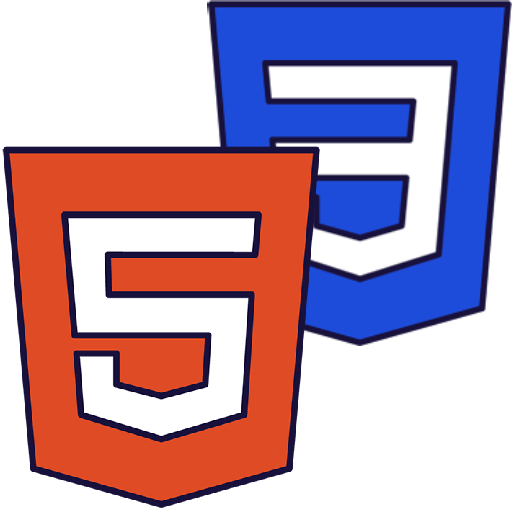 Introduction to HTML and CSS
Introduction to HTML and CSS
- Understand and apply basic and advanced HTML elements to create structured web pages.
- Create and manipulate tables and lists in HTML for effective data presentation.
- Design interactive forms using basic and advanced HTML input types.
- Embed multimedia elements into web pages using HTML5.
- Apply CSS for styling web pages, including text, fonts, and layout design.
- Understand and apply basic HTML elements such as headings, paragraphs, breaks, images, and links to structure a webpage.
- Create simple and complex tables in HTML, utilising advanced features like rowspan and colspan.
- Design and code interactive forms using HTML elements, including advanced input types.
- Embed audio and video files into web pages using HTML5 multimedia elements.
- Apply CSS to style web pages, including understanding the CSS Box Model, styling text, manipulating fonts, and creating website layouts.
Students will need to use one of these devices. If necessary, students can work in groups (ideally in a group of 2 or 3 students) and use one device between them.
 Chromebook/Laptop/PC
Chromebook/Laptop/PC
 Chromebooks, laptops, and PCs are crucial tools for coding and digital skills education. Chromebooks are ideal for web-based applications and collaborative projects, while laptops and PCs support a wider range of programming environments and software for more intensive tasks like software development and data analysis.
Chromebooks, laptops, and PCs are crucial tools for coding and digital skills education. Chromebooks are ideal for web-based applications and collaborative projects, while laptops and PCs support a wider range of programming environments and software for more intensive tasks like software development and data analysis.Equipped with full keyboards and the ability to run specialized coding software, these devices enable students to learn programming languages, debug code, and understand software architecture. Their versatility supports both individual learning and group projects, making them indispensable for developing critical digital and computational thinking skills in the classroom.
 iPad/Tablet
iPad/Tablet

iPads and tablets are versatile, portable computing devices that offer a wide range of educational applications in the classroom. Featuring touch-sensitive screens ranging from 7 to 13 inches, these devices allow students and teachers to interact directly with content through touch, swipe, and voice commands.
| Unit | Lesson | Level | |
|---|---|---|---|
| Lesson | Introduction to HTML | Quiz | Beginner |
| Lesson | HTML Basic Elements | Quiz | Beginner |
| Lesson | HTML Tables | Quiz | Beginner |
| Lesson | Crafting Complex Tables | Quiz | Intermediate |
| Lesson | HTML Lists | Quiz | Intermediate |
| Lesson | Basics of Form Creation | Quiz | Intermediate |
| Lesson | Advanced Input Types | Quiz | Advanced |
| Lesson | Embedding Audio and Video | Quiz | Advanced |
| Lesson | Introduction to CSS | Quiz | Advanced |
| Lesson | CSS Box Model | Quiz | Advanced |
| Lesson | CSS Text | Quiz | Advanced |
| Lesson | CSS Fonts | Quiz | Advanced |
| Lesson | CSS Website Layout | Quiz | Advanced |
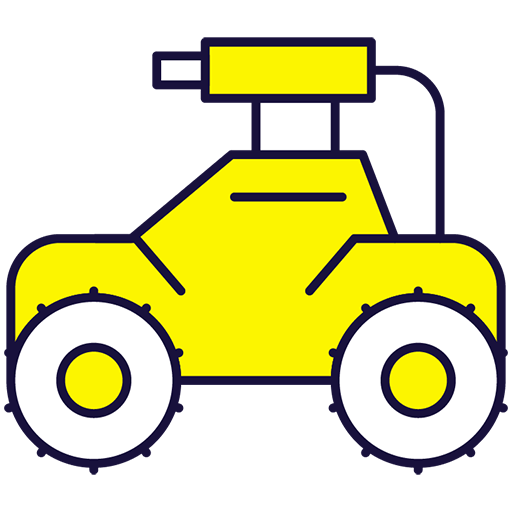 Driving Innovation with Microbits and Cars
Driving Innovation with Microbits and Cars
- Master the assembly and programming of Microbit Traffic Lights Kit.
- Understand and implement the construction and programming of Move Motor Sensor Car.
- Develop skills to program the car to follow lines and navigate around objects using sensors.
- Learn to use the accelerometer and radio in Microbit for remote control of the car.
- Gain proficiency in assembling and programming the Move Motor Klaw for various applications.
- Construct and program Microbit traffic lights to execute a sequence.
- Assemble and program a Move Motor Sensor Car with Microbit.
- Program a line-following car using sensor values and conditional statements.
- Utilise the sonar sensor on the Move Motor Car to measure distances and transmit the results to another Microbit.
- Program distance sensors on the Move Motor Car to detect and navigate around objects.
Students will need to use one of these devices. If necessary, students can work in groups (ideally in a group of 2 or 3 students) and use one device between them.
 Chromebook/Laptop/PC
Chromebook/Laptop/PC
 Chromebooks, laptops, and PCs are crucial tools for coding and digital skills education. Chromebooks are ideal for web-based applications and collaborative projects, while laptops and PCs support a wider range of programming environments and software for more intensive tasks like software development and data analysis.
Chromebooks, laptops, and PCs are crucial tools for coding and digital skills education. Chromebooks are ideal for web-based applications and collaborative projects, while laptops and PCs support a wider range of programming environments and software for more intensive tasks like software development and data analysis.Equipped with full keyboards and the ability to run specialized coding software, these devices enable students to learn programming languages, debug code, and understand software architecture. Their versatility supports both individual learning and group projects, making them indispensable for developing critical digital and computational thinking skills in the classroom.
The equipment listed below is used in lessons in this course. Please note that these items can be shared among students if necessary.
 Microbit
Microbit

The BBC microbit is a pocket-sized codeable computer with motion detection, a built-in compass and Bluetooth technology.
The board measures 4 cm × 5 cm and has a processor, accelerometer and magnetometer sensors, Bluetooth and USB connectivity, a display consisting of 25 LEDs, two programmable buttons, and can be powered by either USB or an external battery pack.
The list of things you can program the Microbit to do is nearly endless. You can program the buttons, LEDs and different sensors to create games and turn the Microbit into things like a pedometer, a compass or even a musical instrument.
Where to buy
Microbits can be purchased from a number of online retailers and can be purchased with and without a USB cable and battery pack. They can also be purchased in bulk from some retailers.
Online retailers
 Move Motor Car
Move Motor Car

The Move Motor Car is a versatile, programmable vehicle that is powered and controlled by the micro:bit, a pocket-sized computer.
This car has motorized wheels and a variety of sensors, allowing students to create and test different robotics and coding projects. By connecting a micro:bit to the car, students can use the MakeCode platform to program the vehicle's movements, speed, and responses to sensor inputs. This provides an engaging and hands-on way for students to learn about coding, robotics, and engineering concepts.
Whether it's navigating through a maze, following a line on the ground, or responding to obstacles, the Move Motor Sensor Car offers endless opportunities for creativity and problem-solving. Perfect for classroom activities, it allows students to explore STEM concepts in an interactive and enjoyable way.
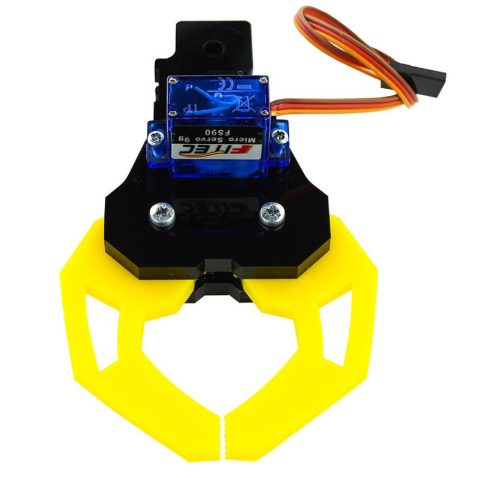 Move Motor Klaw
Move Motor Klaw

The Move Motor Klaw is a robotic accessory designed to be attached to motorized vehicles, like the Move Motor Robot Car.
This mechanical claw can be programmed to open and close, allowing it to pick up, hold, or move objects. By integrating it with a micro:bit and using the MakeCode platform, students can code the Klaw to perform specific actions, such as grabbing items or completing simple tasks. Ideal for classroom projects, the Move Motor Klaw offers students a hands-on way to explore robotics, engineering, and coding, enhancing their problem-solving and creative skills.
 Phillips Screwdriver
Phillips Screwdriver

A Phillips screwdriver is a hand tool with a cross-shaped tip, designed to drive screws with a matching recessed cross or "Phillips" head. It's commonly used in a wide range of applications, including assembly and repair of appliances, electronics, and furniture. Essential for many classroom projects, it helps students learn practical skills and safely connect components.
 Traffic Lights Kit
Traffic Lights Kit
| Unit | Lesson | Level | |
|---|---|---|---|
| Lesson | Build your Traffic Lights | Quiz | Beginner |
| Lesson | Microbit Traffic Lights | Quiz Challenge | Beginner |
| Lesson | Build your Move Motor Sensor Car | Quiz Challenge | Intermediate |
| Lesson | Line Following Car | Quiz Challenge | Intermediate |
| Lesson | Move Motor Measure | Quiz Challenge | Intermediate |
| Lesson | Autonomous Car | Quiz Challenge | Intermediate |
| Lesson | Tilt Remote Control Car | Quiz Challenge | Advanced |
| Lesson | Traffic Lights and Car Communication | Quiz Challenge | Advanced |
| Lesson | Attach the Move Motor Klaw | Quiz | Advanced |
| Lesson | Robot Car Claw | Quiz Challenge | Advanced |
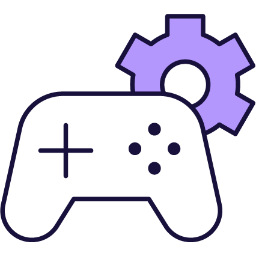 Game Design Essentials
Game Design Essentials
- Master the use of MakeCode Arcade for game design and development.
- Develop skills in creating and controlling game sprites, including player and AI-controlled characters.
- Understand and implement game mechanics such as scoring, lives, collision effects, and game outcomes.
- Apply coding concepts to create interactive games with different themes and mechanics.
- Gain the ability to design, code, test, and refine a variety of games, culminating in a final game showcase.
- Create and control game sprites using MakeCode Arcade.
- Design and implement game mechanics such as movement, collision detection, scoring, and game over conditions.
- Understand and apply coding concepts to create interactive games, including sprite overlaps, game logic, and variable tracking.
- Develop a variety of games including arcade, platform, and battle arena games, demonstrating creativity and technical skills.
- Present a completed game project, demonstrating understanding of game design principles and coding concepts.
Students will need to use one of these devices. If necessary, students can work in groups (ideally in a group of 2 or 3 students) and use one device between them.
 Chromebook/Laptop/PC
Chromebook/Laptop/PC
 Chromebooks, laptops, and PCs are crucial tools for coding and digital skills education. Chromebooks are ideal for web-based applications and collaborative projects, while laptops and PCs support a wider range of programming environments and software for more intensive tasks like software development and data analysis.
Chromebooks, laptops, and PCs are crucial tools for coding and digital skills education. Chromebooks are ideal for web-based applications and collaborative projects, while laptops and PCs support a wider range of programming environments and software for more intensive tasks like software development and data analysis.Equipped with full keyboards and the ability to run specialized coding software, these devices enable students to learn programming languages, debug code, and understand software architecture. Their versatility supports both individual learning and group projects, making them indispensable for developing critical digital and computational thinking skills in the classroom.
 iPad/Tablet
iPad/Tablet

iPads and tablets are versatile, portable computing devices that offer a wide range of educational applications in the classroom. Featuring touch-sensitive screens ranging from 7 to 13 inches, these devices allow students and teachers to interact directly with content through touch, swipe, and voice commands.
| Unit | Lesson | Level | |
|---|---|---|---|
| Lesson | First Arcade Project | Quiz Challenge | Beginner |
| Lesson | Space Dodge | Quiz Challenge | Beginner |
| Lesson | Bat Battle | Quiz Challenge | Beginner |
| Lesson | Space Shooter | Quiz Challenge | Beginner |
| Lesson | Platform Place | Quiz Challenge | Intermediate |
| Lesson | Dino Jump | Quiz Challenge | Advanced |
| Lesson | Monster Battle Arena | Quiz Challenge | Advanced |
| Lesson | Donut Rush | Quiz Challenge | Advanced |
Extra Module

Exploring Electronics and Light
Microbit Makers: Code Light Shows & Interactive Projects!
 Exploring Electronics and Light
Exploring Electronics and Light
- Understand and apply the principles of programming LED strips using Microbit projects.
- Develop skills to create interactive LED displays that respond to sound and temperature changes.
- Design and implement a game using LED strip and Microbit programming.
- Enhance creativity and problem-solving skills through the design of LED flags and stacking effects.
- Apply teamwork and project management skills in brainstorming and executing a group Microbit project.
- Programme a strip of LEDs to display colourful patterns using Microbit.
- Design and implement an LED Strip Clapper that responds to sound, specifically a clap, to turn on and off.
- Convert an LED strip into a visual thermometer that lights up and changes colour according to the current temperature.
- Create a voice-activated 'Shooting Stars' display using an LED strip and Microbit.
- Design and code tricolour flags using LED strips.
- Create a stacking effect on an LED strip, controlled by Microbit, with the ability to increase and decrease the size of the stack.
- Develop an LED Strip Precision Game that involves timing and accuracy.
- Brainstorm, design, and implement a simple Microbit project in a team, demonstrating creativity and teamwork.
Students will need to use one of these devices. If necessary, students can work in groups (ideally in a group of 2 or 3 students) and use one device between them.
 Chromebook/Laptop/PC
Chromebook/Laptop/PC
 Chromebooks, laptops, and PCs are crucial tools for coding and digital skills education. Chromebooks are ideal for web-based applications and collaborative projects, while laptops and PCs support a wider range of programming environments and software for more intensive tasks like software development and data analysis.
Chromebooks, laptops, and PCs are crucial tools for coding and digital skills education. Chromebooks are ideal for web-based applications and collaborative projects, while laptops and PCs support a wider range of programming environments and software for more intensive tasks like software development and data analysis.Equipped with full keyboards and the ability to run specialized coding software, these devices enable students to learn programming languages, debug code, and understand software architecture. Their versatility supports both individual learning and group projects, making them indispensable for developing critical digital and computational thinking skills in the classroom.
The equipment listed below is used in lessons in this course. Please note that these items can be shared among students if necessary.
 LED Strip with crocodile clips
LED Strip with crocodile clips

The Adafruit NeoPixel LED Strip is a flexible, programmable strip of individually addressable RGB LEDs. Each LED can be controlled separately to display a wide range of colors and patterns.
Ideal for creative and educational projects, these strips can be used to teach students about coding, electronics, and design. By using platforms like Microbits or Arduino, students can program the LED strip to create custom lighting effects, interactive displays, or even simple animations. Perfect for classroom activities, the NeoPixel LED Strip provides a vibrant and engaging way to explore technology and creativity.
 Microbit
Microbit

The BBC microbit is a pocket-sized codeable computer with motion detection, a built-in compass and Bluetooth technology.
The board measures 4 cm × 5 cm and has a processor, accelerometer and magnetometer sensors, Bluetooth and USB connectivity, a display consisting of 25 LEDs, two programmable buttons, and can be powered by either USB or an external battery pack.
The list of things you can program the Microbit to do is nearly endless. You can program the buttons, LEDs and different sensors to create games and turn the Microbit into things like a pedometer, a compass or even a musical instrument.
Where to buy
Microbits can be purchased from a number of online retailers and can be purchased with and without a USB cable and battery pack. They can also be purchased in bulk from some retailers.
Online retailers
| Unit | Lesson | Level | |
|---|---|---|---|
| Lesson | Microbit LED Strip | Quiz Challenge | Beginner |
| Lesson | LED Strip Clapper | Quiz Challenge | Beginner |
| Lesson | Microbit LED Strip Thermometer | Quiz Challenge | Beginner |
| Lesson | Shooting Stars | Quiz Challenge | Intermediate |
| Lesson | LED Flags | Quiz Challenge | Intermediate |
| Lesson | LED Stacking | Quiz Challenge | Advanced |
| Lesson | LED Strip Precision Game | Quiz Challenge | Advanced |
| Lesson | Microbit Lab | Advanced |
Extra Module

Discovering Artificial Intelligence
Discover AI and learn how to program it using Scratch.
 Discovering Artificial Intelligence
Discovering Artificial Intelligence
- Understand the fundamentals of AI models, their types, applications, limitations, and ethical considerations.
- Develop an image model using Google's Teachable Machine and apply it in a practical project.
- Create an interactive game using Scratch and Google Teachable Machine, incorporating elements of randomisation and conditionals.
- Design and develop a pose model using Google's Teachable Machine, and apply it in a space game project.
- Conceptualise, plan, and execute an original AI Scratch project, demonstrating creativity, problem-solving, and application of AI knowledge.
- Understand and explain the function, types, applications, and limitations of AI models, including ethical considerations.
- Create an image model using Google's Teachable Machine for a rock, paper, scissors game.
- Develop a Rock, Paper, Scissors game using Scratch and Google Teachable Machine, incorporating variables, randomisation, and conditionals.
- Create a pose model using Google's Teachable Machine for a space game, understanding the importance of testing and adjusting the model.
- Conceptualise, plan, and build a unique AI Scratch project, demonstrating creativity, problem-solving, and the ability to seek and incorporate feedback.
Students will need to use one of these devices. If necessary, students can work in groups (ideally in a group of 2 or 3 students) and use one device between them.
 Chromebook/Laptop/PC
Chromebook/Laptop/PC
 Chromebooks, laptops, and PCs are crucial tools for coding and digital skills education. Chromebooks are ideal for web-based applications and collaborative projects, while laptops and PCs support a wider range of programming environments and software for more intensive tasks like software development and data analysis.
Chromebooks, laptops, and PCs are crucial tools for coding and digital skills education. Chromebooks are ideal for web-based applications and collaborative projects, while laptops and PCs support a wider range of programming environments and software for more intensive tasks like software development and data analysis.Equipped with full keyboards and the ability to run specialized coding software, these devices enable students to learn programming languages, debug code, and understand software architecture. Their versatility supports both individual learning and group projects, making them indispensable for developing critical digital and computational thinking skills in the classroom.
 iPad/Tablet
iPad/Tablet

iPads and tablets are versatile, portable computing devices that offer a wide range of educational applications in the classroom. Featuring touch-sensitive screens ranging from 7 to 13 inches, these devices allow students and teachers to interact directly with content through touch, swipe, and voice commands.
The equipment listed below is used in lessons in this course. Please note that these items can be shared among students if necessary.
 Webcam/camera
Webcam/camera
| Unit | Lesson | Level | |
|---|---|---|---|
| Lessons | An Introduction to AI Models | Quiz | Advanced |
| Lessons | Create an Image Model | Quiz | Advanced |
| Lesson | Scratch AI Rock, Paper, Scissors Game | Quiz Challenge | Intermediate |
| Lessons | Create a Pose Model | Quiz | Advanced |
| Lessons | Scratch AI Pose Space Game | Quiz Challenge | Advanced |
| Lesson | Crafting Your Own AI Project | Advanced |
 Introduction to Microbit Programming
Introduction to Microbit Programming
- Understand the fundamentals of microbits and their programming.
- Develop proficiency in creating, adding, and deleting code in the project editor.
- Gain skills in programming microbits to display messages, react to button presses, show icons, play melodies, and respond to movement.
- Design and create a reaction timer game using a Microbit.
- Learn to create variables, store time stamps, and record a player's reaction time in a game.
- Understand and utilise the project editor on the MakeCode for Microbit website.
- Create, add, and delete code to program a Microbit to display messages, react to button presses, and play melodies.
- Connect a Microbit to a computer and upload the programmed code.
- Design and create a reaction timer game using a Microbit, incorporating random visual prompts.
- Use variables to store time stamps and record a player's reaction time in the game.
Students will need to use one of these devices. If necessary, students can work in groups (ideally in a group of 2 or 3 students) and use one device between them.
 Chromebook/Laptop/PC
Chromebook/Laptop/PC
 Chromebooks, laptops, and PCs are crucial tools for coding and digital skills education. Chromebooks are ideal for web-based applications and collaborative projects, while laptops and PCs support a wider range of programming environments and software for more intensive tasks like software development and data analysis.
Chromebooks, laptops, and PCs are crucial tools for coding and digital skills education. Chromebooks are ideal for web-based applications and collaborative projects, while laptops and PCs support a wider range of programming environments and software for more intensive tasks like software development and data analysis.Equipped with full keyboards and the ability to run specialized coding software, these devices enable students to learn programming languages, debug code, and understand software architecture. Their versatility supports both individual learning and group projects, making them indispensable for developing critical digital and computational thinking skills in the classroom.
The equipment listed below is used in lessons in this course. Please note that these items can be shared among students if necessary.
 Microbit
Microbit

The BBC microbit is a pocket-sized codeable computer with motion detection, a built-in compass and Bluetooth technology.
The board measures 4 cm × 5 cm and has a processor, accelerometer and magnetometer sensors, Bluetooth and USB connectivity, a display consisting of 25 LEDs, two programmable buttons, and can be powered by either USB or an external battery pack.
The list of things you can program the Microbit to do is nearly endless. You can program the buttons, LEDs and different sensors to create games and turn the Microbit into things like a pedometer, a compass or even a musical instrument.
Where to buy
Microbits can be purchased from a number of online retailers and can be purchased with and without a USB cable and battery pack. They can also be purchased in bulk from some retailers.
Online retailers
| Unit | Lesson | Level | |
|---|---|---|---|
| Lesson | Exploring Microbits | Quiz | Beginner |
| Lesson | Reaction Timer | Quiz Challenge | Beginner |
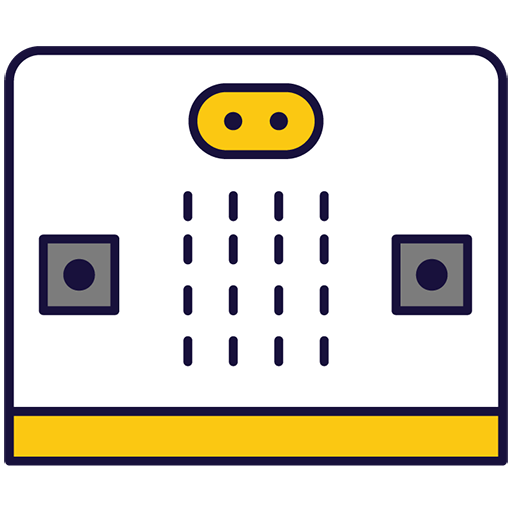 Advanced Microbit Applications
Advanced Microbit Applications
- Master the use and application of Microbit sensors to interpret and respond to different inputs.
- Develop proficiency in creating functional Microbit applications such as an alarm system and a seismic and meteorological station.
- Gain skills in programming Microbit games that incorporate variables, functions, and gesture controls.
- Understand the principles of radio communication between Microbits and apply this knowledge to create a proximity detector.
- Enhance creativity, critical thinking, and teamwork skills through the design and implementation of a unique Microbit project.
- Interpret and utilise Microbit sensors to create interactive graphs.
- Design and implement a Microbit alarm system using sensor data and threshold values.
- Develop a multi-device IoT network using Microbits to monitor and display environmental data.
- Create a time-based game on Microbit using variables and functions.
- Use radio signals between two Microbits to detect proximity.
- Design and code an interactive game on Microbit using gestures for control.
- Brainstorm, design, and implement a simple Microbit project in a team.
Students will need to use one of these devices. If necessary, students can work in groups (ideally in a group of 2 or 3 students) and use one device between them.
 Chromebook/Laptop/PC
Chromebook/Laptop/PC
 Chromebooks, laptops, and PCs are crucial tools for coding and digital skills education. Chromebooks are ideal for web-based applications and collaborative projects, while laptops and PCs support a wider range of programming environments and software for more intensive tasks like software development and data analysis.
Chromebooks, laptops, and PCs are crucial tools for coding and digital skills education. Chromebooks are ideal for web-based applications and collaborative projects, while laptops and PCs support a wider range of programming environments and software for more intensive tasks like software development and data analysis.Equipped with full keyboards and the ability to run specialized coding software, these devices enable students to learn programming languages, debug code, and understand software architecture. Their versatility supports both individual learning and group projects, making them indispensable for developing critical digital and computational thinking skills in the classroom.
The equipment listed below is used in lessons in this course. Please note that these items can be shared among students if necessary.
 Microbit
Microbit

The BBC microbit is a pocket-sized codeable computer with motion detection, a built-in compass and Bluetooth technology.
The board measures 4 cm × 5 cm and has a processor, accelerometer and magnetometer sensors, Bluetooth and USB connectivity, a display consisting of 25 LEDs, two programmable buttons, and can be powered by either USB or an external battery pack.
The list of things you can program the Microbit to do is nearly endless. You can program the buttons, LEDs and different sensors to create games and turn the Microbit into things like a pedometer, a compass or even a musical instrument.
Where to buy
Microbits can be purchased from a number of online retailers and can be purchased with and without a USB cable and battery pack. They can also be purchased in bulk from some retailers.
Online retailers
| Unit | Lesson | Level | |
|---|---|---|---|
| Lesson | Microbit Sensor Graphs | Quiz Challenge | Beginner |
| Lesson | Creating a Microbits Alarm System | Quiz Challenge | Intermediate |
| Lesson | Microbit Seismic and Meteorological Station | Quiz Challenge | Intermediate |
| Lesson | Exactly 11 | Quiz Challenge | Intermediate |
| Lesson | Microbit Finder | Quiz Challenge | Advanced |
| Lesson | Chase the Dot | Quiz Challenge | Advanced |
| Lesson | Microbit - Invaders | Quiz Challenge | Advanced |
| Lesson | Microbit Lab | Advanced |
.png) Coding with JavaScript
Coding with JavaScript
- Understand and apply the fundamentals of JavaScript, including syntax, code execution, and debugging.
- Develop proficiency in creating and manipulating JavaScript variables and data types.
- Master the use of JavaScript operators for arithmetic, string, assignment, comparison, and logical operations.
- Gain competency in controlling code flow using JavaScript conditional and switch statements.
- Apply learned JavaScript skills to create an innovative project using the MakeCode Microbit editor.
- Understand and apply the basic concepts of JavaScript, including code execution sequence and debugging syntax errors.
- Create and manipulate variables in JavaScript, understanding their role in storing and calculating data.
- Identify and utilise different JavaScript data types, including strings, numbers, booleans, arrays, and objects.
- Apply JavaScript operators and conditional statements to control the flow of code and perform operations between operands.
- Design and implement a unique project using JavaScript and the MakeCode Microbit editor, demonstrating a comprehensive understanding of the language's fundamentals.
Students will need to use one of these devices. If necessary, students can work in groups (ideally in a group of 2 or 3 students) and use one device between them.
 Chromebook/Laptop/PC
Chromebook/Laptop/PC
 Chromebooks, laptops, and PCs are crucial tools for coding and digital skills education. Chromebooks are ideal for web-based applications and collaborative projects, while laptops and PCs support a wider range of programming environments and software for more intensive tasks like software development and data analysis.
Chromebooks, laptops, and PCs are crucial tools for coding and digital skills education. Chromebooks are ideal for web-based applications and collaborative projects, while laptops and PCs support a wider range of programming environments and software for more intensive tasks like software development and data analysis.Equipped with full keyboards and the ability to run specialized coding software, these devices enable students to learn programming languages, debug code, and understand software architecture. Their versatility supports both individual learning and group projects, making them indispensable for developing critical digital and computational thinking skills in the classroom.
The equipment listed below is used in lessons in this course. Please note that these items can be shared among students if necessary.
 Microbit
Microbit

The BBC microbit is a pocket-sized codeable computer with motion detection, a built-in compass and Bluetooth technology.
The board measures 4 cm × 5 cm and has a processor, accelerometer and magnetometer sensors, Bluetooth and USB connectivity, a display consisting of 25 LEDs, two programmable buttons, and can be powered by either USB or an external battery pack.
The list of things you can program the Microbit to do is nearly endless. You can program the buttons, LEDs and different sensors to create games and turn the Microbit into things like a pedometer, a compass or even a musical instrument.
Where to buy
Microbits can be purchased from a number of online retailers and can be purchased with and without a USB cable and battery pack. They can also be purchased in bulk from some retailers.
Online retailers
| Unit | Lesson | Level | |
|---|---|---|---|
| Lesson | Introduction to JavaScript | Quiz | Intermediate |
| Lesson | JavaScript - Exactly 11 | Quiz Challenge | Intermediate |
| Lesson | JavaScript Variables | Quiz Challenge | Intermediate |
| Lesson | JavaScript Data Types | Quiz Challenge | Intermediate |
| Lesson | JavaScript Operators | Quiz Challenge | Advanced |
| Lesson | JavaScript Conditional Statements | Quiz Challenge | Advanced |
| Lesson | JavaScript Switch Statements | Quiz Challenge | Advanced |
| Lesson | Microbit Innovation Project | Advanced |
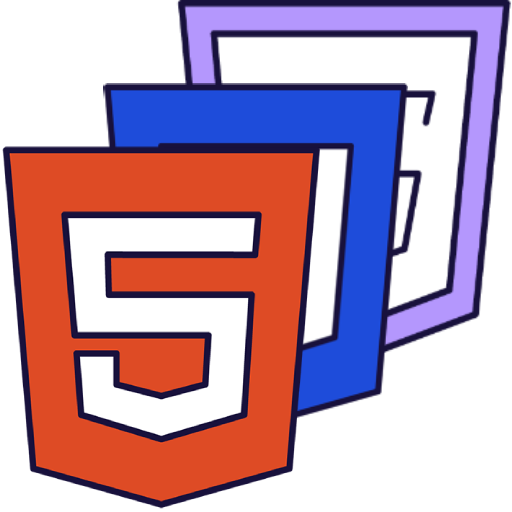 Dynamic Web Design with HTML, CSS & JS
Dynamic Web Design with HTML, CSS & JS
- Master the interaction of HTML, CSS, and JavaScript to create dynamic web pages.
- Set up and effectively utilise web development tools including code editors, browser developer tools, and debugging consoles.
- Develop advanced scripting skills for DOM manipulation, including creating, deleting, and modifying HTML elements.
- Implement dynamic form validation with JavaScript, providing real-time feedback and validating various input types.
- Integrate external libraries and APIs into web development projects to enhance functionality and data dynamism.
- Understand and apply the interaction between HTML, CSS, and JavaScript to create dynamic web pages.
- Set up and effectively use a web development environment, including code editors, browser developer tools, and debugging consoles.
- Manipulate the Document Object Model (DOM) using JavaScript, including creating, deleting, and modifying HTML elements based on certain conditions or inputs.
- Implement dynamic form validation using JavaScript, providing real-time feedback and validating different input types.
- Integrate external libraries such as jQuery and APIs to pull dynamic data into web pages.
- Create an interactive quiz game using HTML, CSS, and JavaScript, incorporating features such as timers, score trackers, and dynamic question loading.
- Develop a Weather Web App that fetches and displays real-time weather data based on a location, making it interactive and visually appealing.
- Present a web development project in a showcase, demonstrating mastery of HTML, CSS, and JavaScript.
Students will need to use one of these devices. If necessary, students can work in groups (ideally in a group of 2 or 3 students) and use one device between them.
 Chromebook/Laptop/PC
Chromebook/Laptop/PC
 Chromebooks, laptops, and PCs are crucial tools for coding and digital skills education. Chromebooks are ideal for web-based applications and collaborative projects, while laptops and PCs support a wider range of programming environments and software for more intensive tasks like software development and data analysis.
Chromebooks, laptops, and PCs are crucial tools for coding and digital skills education. Chromebooks are ideal for web-based applications and collaborative projects, while laptops and PCs support a wider range of programming environments and software for more intensive tasks like software development and data analysis.Equipped with full keyboards and the ability to run specialized coding software, these devices enable students to learn programming languages, debug code, and understand software architecture. Their versatility supports both individual learning and group projects, making them indispensable for developing critical digital and computational thinking skills in the classroom.
 iPad/Tablet
iPad/Tablet

iPads and tablets are versatile, portable computing devices that offer a wide range of educational applications in the classroom. Featuring touch-sensitive screens ranging from 7 to 13 inches, these devices allow students and teachers to interact directly with content through touch, swipe, and voice commands.
| Unit | Lesson | Level | |
|---|---|---|---|
| Lesson | Overview of how HTML, CSS, and JavaScript Interact | Quiz | Beginner |
| Lesson | Setting up Essential Tools | Quiz Challenge | Beginner |
| Lesson | Scripting and DOM Manipulation | Quiz Challenge | Intermediate |
| Lesson | Dynamic Form Validation with JavaScript | Quiz Challenge | Advanced |
| Lesson | Integrating External Libraries and APIs | Quiz Challenge | Advanced |
| Lesson | Interactive Quiz Game | Quiz Challenge | Advanced |
| Lesson | Weather Web App | Quiz Challenge | Advanced |
| Lesson | Web Showcase | Advanced |
Extra Module

Exploring Electronics and Light
Microbit Makers: Code Light Shows & Interactive Projects!
 Exploring Electronics and Light
Exploring Electronics and Light
- Understand and apply the principles of programming LED strips using Microbit projects.
- Develop skills to create interactive LED displays that respond to sound and temperature changes.
- Design and implement a game using LED strip and Microbit programming.
- Enhance creativity and problem-solving skills through the design of LED flags and stacking effects.
- Apply teamwork and project management skills in brainstorming and executing a group Microbit project.
- Programme a strip of LEDs to display colourful patterns using Microbit.
- Design and implement an LED Strip Clapper that responds to sound, specifically a clap, to turn on and off.
- Convert an LED strip into a visual thermometer that lights up and changes colour according to the current temperature.
- Create a voice-activated 'Shooting Stars' display using an LED strip and Microbit.
- Design and code tricolour flags using LED strips.
- Create a stacking effect on an LED strip, controlled by Microbit, with the ability to increase and decrease the size of the stack.
- Develop an LED Strip Precision Game that involves timing and accuracy.
- Brainstorm, design, and implement a simple Microbit project in a team, demonstrating creativity and teamwork.
Students will need to use one of these devices. If necessary, students can work in groups (ideally in a group of 2 or 3 students) and use one device between them.
 Chromebook/Laptop/PC
Chromebook/Laptop/PC
 Chromebooks, laptops, and PCs are crucial tools for coding and digital skills education. Chromebooks are ideal for web-based applications and collaborative projects, while laptops and PCs support a wider range of programming environments and software for more intensive tasks like software development and data analysis.
Chromebooks, laptops, and PCs are crucial tools for coding and digital skills education. Chromebooks are ideal for web-based applications and collaborative projects, while laptops and PCs support a wider range of programming environments and software for more intensive tasks like software development and data analysis.Equipped with full keyboards and the ability to run specialized coding software, these devices enable students to learn programming languages, debug code, and understand software architecture. Their versatility supports both individual learning and group projects, making them indispensable for developing critical digital and computational thinking skills in the classroom.
The equipment listed below is used in lessons in this course. Please note that these items can be shared among students if necessary.
 LED Strip with crocodile clips
LED Strip with crocodile clips

The Adafruit NeoPixel LED Strip is a flexible, programmable strip of individually addressable RGB LEDs. Each LED can be controlled separately to display a wide range of colors and patterns.
Ideal for creative and educational projects, these strips can be used to teach students about coding, electronics, and design. By using platforms like Microbits or Arduino, students can program the LED strip to create custom lighting effects, interactive displays, or even simple animations. Perfect for classroom activities, the NeoPixel LED Strip provides a vibrant and engaging way to explore technology and creativity.
 Microbit
Microbit

The BBC microbit is a pocket-sized codeable computer with motion detection, a built-in compass and Bluetooth technology.
The board measures 4 cm × 5 cm and has a processor, accelerometer and magnetometer sensors, Bluetooth and USB connectivity, a display consisting of 25 LEDs, two programmable buttons, and can be powered by either USB or an external battery pack.
The list of things you can program the Microbit to do is nearly endless. You can program the buttons, LEDs and different sensors to create games and turn the Microbit into things like a pedometer, a compass or even a musical instrument.
Where to buy
Microbits can be purchased from a number of online retailers and can be purchased with and without a USB cable and battery pack. They can also be purchased in bulk from some retailers.
Online retailers
| Unit | Lesson | Level | |
|---|---|---|---|
| Lesson | Microbit LED Strip | Quiz Challenge | Beginner |
| Lesson | LED Strip Clapper | Quiz Challenge | Beginner |
| Lesson | Microbit LED Strip Thermometer | Quiz Challenge | Beginner |
| Lesson | Shooting Stars | Quiz Challenge | Intermediate |
| Lesson | LED Flags | Quiz Challenge | Intermediate |
| Lesson | LED Stacking | Quiz Challenge | Advanced |
| Lesson | LED Strip Precision Game | Quiz Challenge | Advanced |
| Lesson | Microbit Lab | Advanced |
Extra Module

Designing and Building for the Future
Robotics Champions: Animate & Control Your Microbit Car!
 Designing and Building for the Future
Designing and Building for the Future
- Master the assembly and programming of Microbit Traffic Lights.
- Develop skills in creating interactive games using Microbit and STOP:bit Traffic Lights.
- Understand and apply the principles of pedestrian crossing simulations using MakeCode editor and micro:bit.
- Gain proficiency in building and programming a Move Motor Sensor Car.
- Learn to code a car to follow a line track and use ultrasonic sensors for object detection and avoidance.
- Assemble and operate a Microbit Traffic Lights Kit.
- Program a sequence of traffic lights using on/off and state methods.
- Create a traffic light reaction game, incorporating variables and reaction time measurements.
- Construct a pedestrian crossing simulation, incorporating button press detection and traffic light sequencing.
- Assemble and code a Move Motor Sensor Car, exploring its various sensors and capabilities.
- Program a Move Motor Car to follow a line track, adjusting code for optimal performance.
- Utilise ultrasonic sensors to enable a Move Motor Car to follow an object and avoid obstacles.
- Control a Move Motor Car using a Microbit as a remote controller, based on tilt detection.
- Code a set of traffic lights and a robot car to communicate and respond to each other's states.
Students will need to use one of these devices. If necessary, students can work in groups (ideally in a group of 2 or 3 students) and use one device between them.
 Chromebook/Laptop/PC
Chromebook/Laptop/PC
 Chromebooks, laptops, and PCs are crucial tools for coding and digital skills education. Chromebooks are ideal for web-based applications and collaborative projects, while laptops and PCs support a wider range of programming environments and software for more intensive tasks like software development and data analysis.
Chromebooks, laptops, and PCs are crucial tools for coding and digital skills education. Chromebooks are ideal for web-based applications and collaborative projects, while laptops and PCs support a wider range of programming environments and software for more intensive tasks like software development and data analysis.Equipped with full keyboards and the ability to run specialized coding software, these devices enable students to learn programming languages, debug code, and understand software architecture. Their versatility supports both individual learning and group projects, making them indispensable for developing critical digital and computational thinking skills in the classroom.
 Microbit
Microbit

The BBC microbit is a pocket-sized codeable computer with motion detection, a built-in compass and Bluetooth technology.
The board measures 4 cm × 5 cm and has a processor, accelerometer and magnetometer sensors, Bluetooth and USB connectivity, a display consisting of 25 LEDs, two programmable buttons, and can be powered by either USB or an external battery pack.
The list of things you can program the Microbit to do is nearly endless. You can program the buttons, LEDs and different sensors to create games and turn the Microbit into things like a pedometer, a compass or even a musical instrument.
Where to buy
Microbits can be purchased from a number of online retailers and can be purchased with and without a USB cable and battery pack. They can also be purchased in bulk from some retailers.
Online retailers
The equipment listed below is used in lessons in this course. Please note that these items can be shared among students if necessary.
 Microbit
Microbit

The BBC microbit is a pocket-sized codeable computer with motion detection, a built-in compass and Bluetooth technology.
The board measures 4 cm × 5 cm and has a processor, accelerometer and magnetometer sensors, Bluetooth and USB connectivity, a display consisting of 25 LEDs, two programmable buttons, and can be powered by either USB or an external battery pack.
The list of things you can program the Microbit to do is nearly endless. You can program the buttons, LEDs and different sensors to create games and turn the Microbit into things like a pedometer, a compass or even a musical instrument.
Where to buy
Microbits can be purchased from a number of online retailers and can be purchased with and without a USB cable and battery pack. They can also be purchased in bulk from some retailers.
Online retailers
 Move Motor Car
Move Motor Car

The Move Motor Car is a versatile, programmable vehicle that is powered and controlled by the micro:bit, a pocket-sized computer.
This car has motorized wheels and a variety of sensors, allowing students to create and test different robotics and coding projects. By connecting a micro:bit to the car, students can use the MakeCode platform to program the vehicle's movements, speed, and responses to sensor inputs. This provides an engaging and hands-on way for students to learn about coding, robotics, and engineering concepts.
Whether it's navigating through a maze, following a line on the ground, or responding to obstacles, the Move Motor Sensor Car offers endless opportunities for creativity and problem-solving. Perfect for classroom activities, it allows students to explore STEM concepts in an interactive and enjoyable way.
 Phillips Screwdriver
Phillips Screwdriver

A Phillips screwdriver is a hand tool with a cross-shaped tip, designed to drive screws with a matching recessed cross or "Phillips" head. It's commonly used in a wide range of applications, including assembly and repair of appliances, electronics, and furniture. Essential for many classroom projects, it helps students learn practical skills and safely connect components.
 Traffic Lights Kit
Traffic Lights Kit
| Unit | Lesson | Level | |
|---|---|---|---|
| Lesson | Build your Traffic Lights | Quiz | Beginner |
| Lesson | Microbit Traffic Lights | Quiz Challenge | Beginner |
| Lesson | Traffic Light Reaction Game | Quiz Challenge | Beginner |
| Lesson | Pedestrian Crossing | Quiz Challenge | Beginner |
| Lesson | Build your Move Motor Sensor Car | Quiz Challenge | Intermediate |
| Lesson | Line Following Car | Quiz Challenge | Intermediate |
| Lesson | Autonomous Car | Quiz Challenge | Intermediate |
| Lesson | Tilt Remote Control Car | Quiz Challenge | Advanced |
| Lesson | Traffic Lights and Car Communication | Quiz Challenge | Advanced |
Extra Module

Discovering Artificial Intelligence
Discover AI and learn how to program it using Scratch.
 Discovering Artificial Intelligence
Discovering Artificial Intelligence
- Understand the fundamentals of AI models, their types, applications, limitations, and ethical considerations.
- Develop an image model using Google's Teachable Machine and apply it in a practical project.
- Create an interactive game using Scratch and Google Teachable Machine, incorporating elements of randomisation and conditionals.
- Design and develop a pose model using Google's Teachable Machine, and apply it in a space game project.
- Conceptualise, plan, and execute an original AI Scratch project, demonstrating creativity, problem-solving, and application of AI knowledge.
- Understand and explain the function, types, applications, and limitations of AI models, including ethical considerations.
- Create an image model using Google's Teachable Machine for a rock, paper, scissors game.
- Develop a Rock, Paper, Scissors game using Scratch and Google Teachable Machine, incorporating variables, randomisation, and conditionals.
- Create a pose model using Google's Teachable Machine for a space game, understanding the importance of testing and adjusting the model.
- Conceptualise, plan, and build a unique AI Scratch project, demonstrating creativity, problem-solving, and the ability to seek and incorporate feedback.
Students will need to use one of these devices. If necessary, students can work in groups (ideally in a group of 2 or 3 students) and use one device between them.
 Chromebook/Laptop/PC
Chromebook/Laptop/PC
 Chromebooks, laptops, and PCs are crucial tools for coding and digital skills education. Chromebooks are ideal for web-based applications and collaborative projects, while laptops and PCs support a wider range of programming environments and software for more intensive tasks like software development and data analysis.
Chromebooks, laptops, and PCs are crucial tools for coding and digital skills education. Chromebooks are ideal for web-based applications and collaborative projects, while laptops and PCs support a wider range of programming environments and software for more intensive tasks like software development and data analysis.Equipped with full keyboards and the ability to run specialized coding software, these devices enable students to learn programming languages, debug code, and understand software architecture. Their versatility supports both individual learning and group projects, making them indispensable for developing critical digital and computational thinking skills in the classroom.
 iPad/Tablet
iPad/Tablet

iPads and tablets are versatile, portable computing devices that offer a wide range of educational applications in the classroom. Featuring touch-sensitive screens ranging from 7 to 13 inches, these devices allow students and teachers to interact directly with content through touch, swipe, and voice commands.
The equipment listed below is used in lessons in this course. Please note that these items can be shared among students if necessary.
 Webcam/camera
Webcam/camera
| Unit | Lesson | Level | |
|---|---|---|---|
| Lessons | An Introduction to AI Models | Quiz | Advanced |
| Lessons | Create an Image Model | Quiz | Advanced |
| Lesson | Scratch AI Rock, Paper, Scissors Game | Quiz Challenge | Intermediate |
| Lessons | Create a Pose Model | Quiz | Advanced |
| Lessons | Scratch AI Pose Space Game | Quiz Challenge | Advanced |
| Lesson | Crafting Your Own AI Project | Advanced |
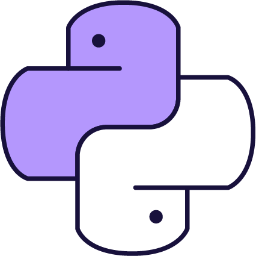 Introduction to Python
Introduction to Python
- Understand and apply basic Python syntax and programming concepts using the Micro:bit Python editor.
- Master the use of variables, including declaration, assignment, and manipulation in Python.
- Comprehend and implement different types of loops and conditional statements in Python programming.
- Learn about and apply comparison operators, logical operators, and conditional Booleans in Python.
- Gain proficiency in working with arrays, including creating, manipulating, and applying advanced array tactics in Python.
- Understand and apply basic Python syntax and use the Micro:bit Python editor to create simple programs.
- Declare, assign, and manipulate variables in Python, culminating in the creation of a higher or lower game.
- Understand and implement different types of loops in Python, including while loops, for loops, and nested loops, and apply these in a reaction time game.
- Use conditional statements in Python to make decisions in code and apply these concepts in a Dice Roller project.
- Understand and use comparison operators, logical operators, and conditional Booleans in Python, and apply these in a Temperature Indicator project.
- Work with arrays in Python, including creating, manipulating, and retrieving elements from a list, and apply these skills in an LED light pattern project.
- Perform advanced operations with arrays in Python, including sorting, finding the length of a list, and counting occurrences, and apply these in a strong password generator project.
- Understand the differences between procedures and functions in Python and apply this knowledge in a weather station project.
- Understand the distinctions between local and global variables, understand variable scope, and apply these concepts in a Micro:bit temperature logger project.
- Conceptualize, plan, and build a unique project using Python and the Micro:bit, applying all the skills and knowledge acquired throughout the course.
Students will need to use one of these devices. If necessary, students can work in groups (ideally in a group of 2 or 3 students) and use one device between them.
 Chromebook/Laptop/PC
Chromebook/Laptop/PC
 Chromebooks, laptops, and PCs are crucial tools for coding and digital skills education. Chromebooks are ideal for web-based applications and collaborative projects, while laptops and PCs support a wider range of programming environments and software for more intensive tasks like software development and data analysis.
Chromebooks, laptops, and PCs are crucial tools for coding and digital skills education. Chromebooks are ideal for web-based applications and collaborative projects, while laptops and PCs support a wider range of programming environments and software for more intensive tasks like software development and data analysis.Equipped with full keyboards and the ability to run specialized coding software, these devices enable students to learn programming languages, debug code, and understand software architecture. Their versatility supports both individual learning and group projects, making them indispensable for developing critical digital and computational thinking skills in the classroom.
The equipment listed below is used in lessons in this course. Please note that these items can be shared among students if necessary.
 Microbit
Microbit

The BBC microbit is a pocket-sized codeable computer with motion detection, a built-in compass and Bluetooth technology.
The board measures 4 cm × 5 cm and has a processor, accelerometer and magnetometer sensors, Bluetooth and USB connectivity, a display consisting of 25 LEDs, two programmable buttons, and can be powered by either USB or an external battery pack.
The list of things you can program the Microbit to do is nearly endless. You can program the buttons, LEDs and different sensors to create games and turn the Microbit into things like a pedometer, a compass or even a musical instrument.
Where to buy
Microbits can be purchased from a number of online retailers and can be purchased with and without a USB cable and battery pack. They can also be purchased in bulk from some retailers.
Online retailers
| Unit | Lesson | Level | |
|---|---|---|---|
| Lesson | An Introduction to Python | Quiz | Intermediate |
| Lesson | Mastering Variables | Quiz Challenge | Intermediate |
| Lesson | Looping Around | Quiz Challenge | Intermediate |
| Lesson | Making Decisions | Quiz Challenge | Intermediate |
| Lesson | Operators Decoded | Quiz Challenge | Advanced |
| Lesson | Array Essentials | Quiz Challenge | Advanced |
| Lesson | Advanced Array Tactics | Quiz Challenge | Advanced |
| Lesson | Function Junction | Quiz Challenge | Advanced |
| Lesson | Scope Showdown: Local vs. Global | Quiz Challenge | Expert |
| Lesson | Python Showcase | Expert |
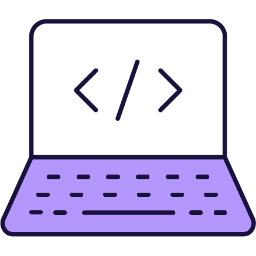 Introduction to Coding Concepts
Introduction to Coding Concepts
- Grasp fundamental coding concepts and their applications in various fields.
- Develop proficiency in using Scratch to create games, animations, and projects.
- Understand and apply coding principles to create interactive games and simulations.
- Learn to manipulate variables, loops, and sprites to create complex patterns and autonomous systems.
- Develop the ability to showcase and explain personal coding projects effectively.
- Understand the basic concepts of coding and its applications in the real world.
- Navigate and utilise Scratch to create simple games and animations, including manipulating sprites, blocks, loops, and backdrops.
- Develop interactive games using Scratch, incorporating elements such as moving sprites, backdrops, sensing blocks, and keyboard controls.
- Apply advanced Scratch features to create complex animations and games, including cloning, colour detection, and autonomous navigation.
- Present and showcase a completed coding project, demonstrating a comprehensive understanding of coding concepts and practical application in Scratch.
Students will need to use one of these devices. If necessary, students can work in groups (ideally in a group of 2 or 3 students) and use one device between them.
 Chromebook/Laptop/PC
Chromebook/Laptop/PC
 Chromebooks, laptops, and PCs are crucial tools for coding and digital skills education. Chromebooks are ideal for web-based applications and collaborative projects, while laptops and PCs support a wider range of programming environments and software for more intensive tasks like software development and data analysis.
Chromebooks, laptops, and PCs are crucial tools for coding and digital skills education. Chromebooks are ideal for web-based applications and collaborative projects, while laptops and PCs support a wider range of programming environments and software for more intensive tasks like software development and data analysis.Equipped with full keyboards and the ability to run specialized coding software, these devices enable students to learn programming languages, debug code, and understand software architecture. Their versatility supports both individual learning and group projects, making them indispensable for developing critical digital and computational thinking skills in the classroom.
 iPad/Tablet
iPad/Tablet

iPads and tablets are versatile, portable computing devices that offer a wide range of educational applications in the classroom. Featuring touch-sensitive screens ranging from 7 to 13 inches, these devices allow students and teachers to interact directly with content through touch, swipe, and voice commands.
| Unit | Lesson | Level | |
|---|---|---|---|
| Lesson | An Introduction to Coding | Quiz | Beginner |
| Lesson | Scratch Tutorial | Quiz Challenge | Beginner |
| Lesson | Paddle Ball Game | Quiz Challenge | Beginner |
| Lesson | Racing Car | Quiz Challenge | Beginner |
| Lesson | Red v Green v Blue | Quiz Challenge | Intermediate |
| Lesson | Pattern Creator | Quiz Challenge | Intermediate |
| Lesson | Attack of the Dots | Quiz Challenge | Intermediate |
| Lesson | Autonomous Car | Quiz Challenge | Intermediate |
| Lesson | Rocket Lander | Quiz Challenge | Advanced |
| Lesson | Project Showcase | Advanced |
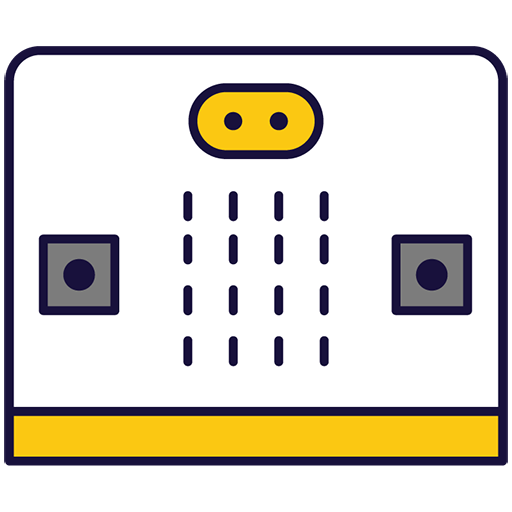 Exploring Microbit Programming
Exploring Microbit Programming
- Master the basics of Microbit programming, including creating projects, writing and deleting code, and connecting Microbits to computers.
- Develop practical applications of Microbit programming, such as creating a step counter, a reaction timer game, and a guessing game.
- Understand and utilise the built-in features of Microbits, such as the accelerometer, magnetometer, and temperature sensor.
- Apply Microbit programming skills to create interactive games and systems, including a paddle ball game, a voting system, and a 'Chase the Dot' game.
- Present and showcase individual Microbit projects, demonstrating a comprehensive understanding of Microbit programming and its applications.
- Program a microbit to display messages, react to button presses, show icons, play melodies, and respond to movement.
- Develop a step counter using the microbit's accelerometer, displaying the number of steps taken.
- Create a reaction timer game using a microbit, measuring reaction times to random visual prompts.
- Design a 'Higher or Lower' game on a microbit, programming button inputs and implementing game logic.
- Control a Scratch Paddle Ball game using a microbit, manipulating the paddle by tilting the microbit.
- Transform a microbit into a compass and thermometer, programming the buttons to use the built-in sensors.
- Establish a voting system using multiple microbits, programming them to cast votes, tally the votes, and reset the system.
- Develop a 'Chase the Dot' game on a microbit, defining variables, creating and calling functions, and using gestures to control movement.
- Present a showcase of the microbit projects developed throughout the course, demonstrating proficiency in microbit programming.
Students will need to use one of these devices. If necessary, students can work in groups (ideally in a group of 2 or 3 students) and use one device between them.
 Chromebook/Laptop/PC
Chromebook/Laptop/PC
 Chromebooks, laptops, and PCs are crucial tools for coding and digital skills education. Chromebooks are ideal for web-based applications and collaborative projects, while laptops and PCs support a wider range of programming environments and software for more intensive tasks like software development and data analysis.
Chromebooks, laptops, and PCs are crucial tools for coding and digital skills education. Chromebooks are ideal for web-based applications and collaborative projects, while laptops and PCs support a wider range of programming environments and software for more intensive tasks like software development and data analysis.Equipped with full keyboards and the ability to run specialized coding software, these devices enable students to learn programming languages, debug code, and understand software architecture. Their versatility supports both individual learning and group projects, making them indispensable for developing critical digital and computational thinking skills in the classroom.
The equipment listed below is used in lessons in this course. Please note that these items can be shared among students if necessary.
 Microbit
Microbit

The BBC microbit is a pocket-sized codeable computer with motion detection, a built-in compass and Bluetooth technology.
The board measures 4 cm × 5 cm and has a processor, accelerometer and magnetometer sensors, Bluetooth and USB connectivity, a display consisting of 25 LEDs, two programmable buttons, and can be powered by either USB or an external battery pack.
The list of things you can program the Microbit to do is nearly endless. You can program the buttons, LEDs and different sensors to create games and turn the Microbit into things like a pedometer, a compass or even a musical instrument.
Where to buy
Microbits can be purchased from a number of online retailers and can be purchased with and without a USB cable and battery pack. They can also be purchased in bulk from some retailers.
Online retailers
| Unit | Lesson | Level | |
|---|---|---|---|
| Lesson | Exploring Microbits | Quiz | Beginner |
| Lesson | Microbit Step Counter | Quiz Challenge | Beginner |
| Lesson | Reaction Timer | Quiz Challenge | Beginner |
| Lesson | Higher or Lower Game | Quiz Challenge | Beginner |
| Lesson | Microbit Paddle Ball | Quiz Challenge | Intermediate |
| Lesson | Microbit Compass and Thermometer | Quiz Challenge | Intermediate |
| Lesson | Microbit Voting System | Quiz Challenge | Intermediate |
| Lesson | Chase the Dot | Quiz Challenge | Advanced |
| Lesson | Microbit Showcase | Advanced |
 Game Design Essentials
Game Design Essentials
- Master the use of MakeCode Arcade for game design and development.
- Develop skills in creating and controlling game sprites, including player and AI-controlled characters.
- Understand and implement game mechanics such as scoring, lives, collision effects, and game outcomes.
- Apply coding concepts to create interactive games with different themes and mechanics.
- Gain the ability to design, code, test, and refine a variety of games, culminating in a final game showcase.
- Create and control game sprites using MakeCode Arcade.
- Design and implement game mechanics such as movement, collision detection, scoring, and game over conditions.
- Understand and apply coding concepts to create interactive games, including sprite overlaps, game logic, and variable tracking.
- Develop a variety of games including arcade, platform, and battle arena games, demonstrating creativity and technical skills.
- Present a completed game project, demonstrating understanding of game design principles and coding concepts.
Students will need to use one of these devices. If necessary, students can work in groups (ideally in a group of 2 or 3 students) and use one device between them.
 Chromebook/Laptop/PC
Chromebook/Laptop/PC
 Chromebooks, laptops, and PCs are crucial tools for coding and digital skills education. Chromebooks are ideal for web-based applications and collaborative projects, while laptops and PCs support a wider range of programming environments and software for more intensive tasks like software development and data analysis.
Chromebooks, laptops, and PCs are crucial tools for coding and digital skills education. Chromebooks are ideal for web-based applications and collaborative projects, while laptops and PCs support a wider range of programming environments and software for more intensive tasks like software development and data analysis.Equipped with full keyboards and the ability to run specialized coding software, these devices enable students to learn programming languages, debug code, and understand software architecture. Their versatility supports both individual learning and group projects, making them indispensable for developing critical digital and computational thinking skills in the classroom.
 iPad/Tablet
iPad/Tablet

iPads and tablets are versatile, portable computing devices that offer a wide range of educational applications in the classroom. Featuring touch-sensitive screens ranging from 7 to 13 inches, these devices allow students and teachers to interact directly with content through touch, swipe, and voice commands.
| Unit | Lesson | Level | |
|---|---|---|---|
| Lesson | First Arcade Project | Quiz Challenge | Beginner |
| Lesson | Space Dodge | Quiz Challenge | Beginner |
| Lesson | Bat Battle | Quiz Challenge | Beginner |
| Lesson | Space Shooter | Quiz Challenge | Beginner |
| Lesson | Platform Place | Quiz Challenge | Intermediate |
| Lesson | Dino Jump | Quiz Challenge | Advanced |
| Lesson | Monster Battle Arena | Quiz Challenge | Advanced |
| Lesson | Donut Rush | Quiz Challenge | Advanced |
 Robotic Cars and Automation
Robotic Cars and Automation
- Understand the concept, history, and future of robotics and its impact on society.
- Develop practical skills in building and programming Microbit Traffic Lights.
- Acquire knowledge in constructing and programming a Move Motor Sensor Car.
- Learn to use sensors for line following, distance measurement, and object navigation in robotic cars.
- Gain proficiency in using a Microbit for remote control and communication between traffic lights and an autonomous car.
- Understand and explain the concept, history, and future of robotics.
- Construct and program traffic lights using a Microbit.
- Build and program a Move Motor Sensor Car to follow lines and navigate around objects.
- Utilise the accelerometer and radio in a Microbit to remotely control the Move Motor Car.
- Assemble, attach, and program the Move Motor Klaw to a Move Motor Car.
Students will need to use one of these devices. If necessary, students can work in groups (ideally in a group of 2 or 3 students) and use one device between them.
 Chromebook/Laptop/PC
Chromebook/Laptop/PC
 Chromebooks, laptops, and PCs are crucial tools for coding and digital skills education. Chromebooks are ideal for web-based applications and collaborative projects, while laptops and PCs support a wider range of programming environments and software for more intensive tasks like software development and data analysis.
Chromebooks, laptops, and PCs are crucial tools for coding and digital skills education. Chromebooks are ideal for web-based applications and collaborative projects, while laptops and PCs support a wider range of programming environments and software for more intensive tasks like software development and data analysis.Equipped with full keyboards and the ability to run specialized coding software, these devices enable students to learn programming languages, debug code, and understand software architecture. Their versatility supports both individual learning and group projects, making them indispensable for developing critical digital and computational thinking skills in the classroom.
The equipment listed below is used in lessons in this course. Please note that these items can be shared among students if necessary.
 Microbit
Microbit

The BBC microbit is a pocket-sized codeable computer with motion detection, a built-in compass and Bluetooth technology.
The board measures 4 cm × 5 cm and has a processor, accelerometer and magnetometer sensors, Bluetooth and USB connectivity, a display consisting of 25 LEDs, two programmable buttons, and can be powered by either USB or an external battery pack.
The list of things you can program the Microbit to do is nearly endless. You can program the buttons, LEDs and different sensors to create games and turn the Microbit into things like a pedometer, a compass or even a musical instrument.
Where to buy
Microbits can be purchased from a number of online retailers and can be purchased with and without a USB cable and battery pack. They can also be purchased in bulk from some retailers.
Online retailers
 Move Motor Car
Move Motor Car

The Move Motor Car is a versatile, programmable vehicle that is powered and controlled by the micro:bit, a pocket-sized computer.
This car has motorized wheels and a variety of sensors, allowing students to create and test different robotics and coding projects. By connecting a micro:bit to the car, students can use the MakeCode platform to program the vehicle's movements, speed, and responses to sensor inputs. This provides an engaging and hands-on way for students to learn about coding, robotics, and engineering concepts.
Whether it's navigating through a maze, following a line on the ground, or responding to obstacles, the Move Motor Sensor Car offers endless opportunities for creativity and problem-solving. Perfect for classroom activities, it allows students to explore STEM concepts in an interactive and enjoyable way.
 Move Motor Klaw
Move Motor Klaw

The Move Motor Klaw is a robotic accessory designed to be attached to motorized vehicles, like the Move Motor Robot Car.
This mechanical claw can be programmed to open and close, allowing it to pick up, hold, or move objects. By integrating it with a micro:bit and using the MakeCode platform, students can code the Klaw to perform specific actions, such as grabbing items or completing simple tasks. Ideal for classroom projects, the Move Motor Klaw offers students a hands-on way to explore robotics, engineering, and coding, enhancing their problem-solving and creative skills.
 Phillips Screwdriver
Phillips Screwdriver

A Phillips screwdriver is a hand tool with a cross-shaped tip, designed to drive screws with a matching recessed cross or "Phillips" head. It's commonly used in a wide range of applications, including assembly and repair of appliances, electronics, and furniture. Essential for many classroom projects, it helps students learn practical skills and safely connect components.
 Traffic Lights Kit
Traffic Lights Kit
| Unit | Lesson | Level | |
|---|---|---|---|
| Lesson | What is a Robot? | Quiz Challenge | Beginner |
| Lesson | History of robotics | Quiz Challenge | Beginner |
| Lesson | Future of robotics | Quiz Challenge | Beginner |
| Lesson | Build your Traffic Lights | Quiz | Beginner |
| Lesson | Microbit Traffic Lights | Quiz Challenge | Beginner |
| Lesson | Build your Move Motor Sensor Car | Quiz Challenge | Intermediate |
| Lesson | Line Following Car | Quiz Challenge | Intermediate |
| Lesson | Move Motor Measure | Quiz Challenge | Intermediate |
| Lesson | Autonomous Car | Quiz Challenge | Intermediate |
| Lesson | Tilt Remote Control Car | Quiz Challenge | Advanced |
| Lesson | Traffic Lights and Car Communication | Quiz Challenge | Advanced |
| Lesson | Attach the Move Motor Klaw | Quiz | Advanced |
| Lesson | Robot Car Claw | Quiz Challenge | Advanced |
 Exploring Digital Art and Design
Exploring Digital Art and Design
- Develop an understanding of the history, forms, and impact of digital art.
- Gain familiarity with various digital art software and tools, and their unique functions.
- Master the basics of navigating and using the interface of digital art software.
- Understand the different types of brushes and tools used in digital art and their effective application.
- Apply the principles of color theory in the creation of digital art.
- Identify the key characteristics and history of digital art, and discuss its impact on creativity.
- Understand and describe the functions of various digital art software and tools.
- Navigate and use the interface of digital art software efficiently, with a focus on Photopea.
- Differentiate between various types of brushes and tools in digital art, and use them effectively in creating artwork.
- Create basic shapes using digital art software and understand their role as the building blocks of artwork.
- Experiment with different brush strokes and effects to create unique digital art pieces.
- Understand the fundamental principles of colour theory and apply them effectively in digital art.
- Present a digital art piece, demonstrating the skills and knowledge acquired throughout the course.
Students will need to use one of these devices. If necessary, students can work in groups (ideally in a group of 2 or 3 students) and use one device between them.
 Chromebook/Laptop/PC
Chromebook/Laptop/PC
 Chromebooks, laptops, and PCs are crucial tools for coding and digital skills education. Chromebooks are ideal for web-based applications and collaborative projects, while laptops and PCs support a wider range of programming environments and software for more intensive tasks like software development and data analysis.
Chromebooks, laptops, and PCs are crucial tools for coding and digital skills education. Chromebooks are ideal for web-based applications and collaborative projects, while laptops and PCs support a wider range of programming environments and software for more intensive tasks like software development and data analysis.Equipped with full keyboards and the ability to run specialized coding software, these devices enable students to learn programming languages, debug code, and understand software architecture. Their versatility supports both individual learning and group projects, making them indispensable for developing critical digital and computational thinking skills in the classroom.
 iPad/Tablet
iPad/Tablet

iPads and tablets are versatile, portable computing devices that offer a wide range of educational applications in the classroom. Featuring touch-sensitive screens ranging from 7 to 13 inches, these devices allow students and teachers to interact directly with content through touch, swipe, and voice commands.
| Unit | Lesson | Level | |
|---|---|---|---|
| Lesson | Introduction to Digital Art | Quiz | Beginner |
| Lesson | Overview of digital art software and tools | Quiz | Beginner |
| Lesson | Basic Navigation and Interface | Quiz | Beginner |
| Lesson | Understanding the Different Types of Brushes and Tools | Quiz | Intermediate |
| Lesson | Creating basic shapes | Quiz | Intermediate |
| Lesson | Experimenting with Different Brush Strokes and Effects | Quiz | Intermediate |
| Lesson | Introduction to Color Theory | Quiz | Intermediate |
| Lesson | Using Color in Digital Art | Quiz | Intermediate |
| Lesson | Digital Art Showcase | Advanced |
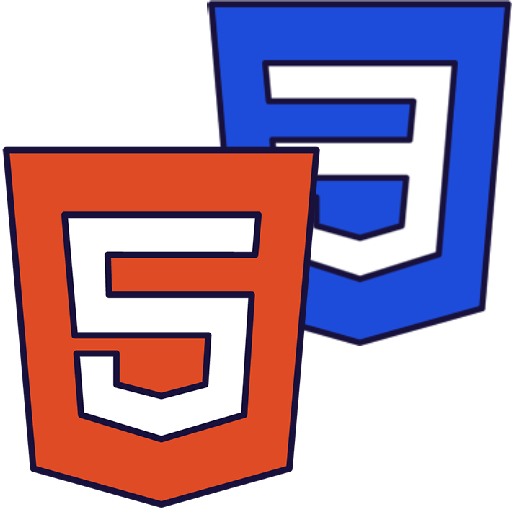 Web Design Basics
Web Design Basics
- Understand and apply basic HTML elements to create structured web pages.
- Design and implement complex HTML tables and lists.
- Create interactive forms using basic and advanced HTML input types.
- Embed multimedia elements into web pages using HTML5.
- Utilise CSS for styling web pages, manipulating text and fonts, and creating website layouts.
- Understand and apply basic HTML elements such as headings, paragraphs, breaks, images, and links to structure a webpage.
- Create and manipulate complex HTML tables using advanced features like rowspan and colspan.
- Design and code interactive forms using HTML elements like <input>, <label>, and <button> and apply advanced input types.
- Embed audio and video files into web pages using HTML5 multimedia elements.
- Utilise CSS to style web pages, including text and fonts, and create a basic website layout.
Students will need to use one of these devices. If necessary, students can work in groups (ideally in a group of 2 or 3 students) and use one device between them.
 Chromebook/Laptop/PC
Chromebook/Laptop/PC
 Chromebooks, laptops, and PCs are crucial tools for coding and digital skills education. Chromebooks are ideal for web-based applications and collaborative projects, while laptops and PCs support a wider range of programming environments and software for more intensive tasks like software development and data analysis.
Chromebooks, laptops, and PCs are crucial tools for coding and digital skills education. Chromebooks are ideal for web-based applications and collaborative projects, while laptops and PCs support a wider range of programming environments and software for more intensive tasks like software development and data analysis.Equipped with full keyboards and the ability to run specialized coding software, these devices enable students to learn programming languages, debug code, and understand software architecture. Their versatility supports both individual learning and group projects, making them indispensable for developing critical digital and computational thinking skills in the classroom.
 iPad/Tablet
iPad/Tablet

iPads and tablets are versatile, portable computing devices that offer a wide range of educational applications in the classroom. Featuring touch-sensitive screens ranging from 7 to 13 inches, these devices allow students and teachers to interact directly with content through touch, swipe, and voice commands.
| Unit | Lesson | Level | |
|---|---|---|---|
| Lesson | Introduction to HTML | Quiz | Beginner |
| Lesson | HTML Basic Elements | Quiz | Beginner |
| Lesson | HTML Tables | Quiz | Beginner |
| Lesson | Crafting Complex Tables | Quiz | Intermediate |
| Lesson | HTML Lists | Quiz | Intermediate |
| Lesson | Basics of Form Creation | Quiz | Intermediate |
| Lesson | Advanced Input Types | Quiz | Advanced |
| Lesson | Embedding Audio and Video | Quiz | Advanced |
| Lesson | Introduction to CSS | Quiz | Advanced |
| Lesson | CSS Box Model | Quiz | Advanced |
| Lesson | CSS Text | Quiz | Advanced |
| Lesson | CSS Fonts | Quiz | Advanced |
| Lesson | CSS Website Layout | Quiz | Advanced |
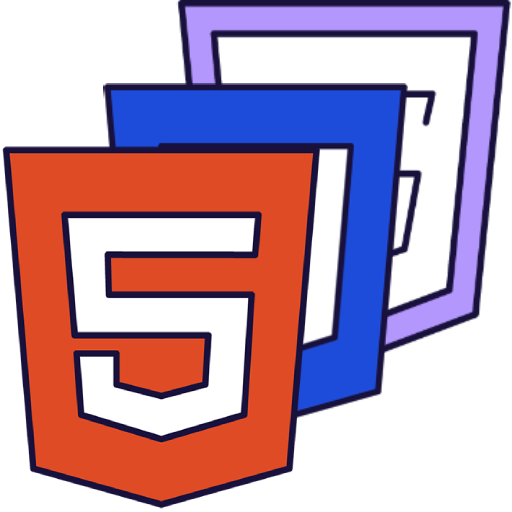 Dynamic Web Design
Dynamic Web Design
- Understand and apply the interaction of HTML, CSS, and JavaScript in creating dynamic web pages.
- Set up and utilise essential web development tools including code editors, browser developer tools, and debugging consoles.
- Master advanced scripting techniques for DOM manipulation, including creating, deleting, and modifying HTML elements.
- Implement dynamic form validation with custom messages using JavaScript, providing real-time feedback for various input types.
- Integrate external libraries such as jQuery and APIs to pull dynamic data into web pages.
- Design and develop interactive web applications, such as a quiz game and a weather web app, incorporating real-time data and user interaction.
- Understand and apply the interaction of HTML, CSS, and JavaScript to create dynamic web pages.
- Set up and utilise essential web development tools including a code editor, browser developer tools, and the console for debugging.
- Manipulate the DOM using advanced scripting techniques such as creating, deleting, or modifying HTML elements based on certain conditions or inputs.
- Implement dynamic form validation with custom validation messages using JavaScript, providing real-time feedback as users fill out forms and validating different input types.
- Integrate external libraries like jQuery and APIs to pull dynamic data into web pages.
- Develop an interactive quiz game that checks answers, provides feedback, and incorporates timers, score trackers, and dynamic question loading.
- Create a Weather Web App that pulls real-time weather data based on a location, and displays it in an engaging and interactive manner.
- Present a web showcase demonstrating the skills and knowledge acquired throughout the course.
Students will need to use one of these devices. If necessary, students can work in groups (ideally in a group of 2 or 3 students) and use one device between them.
 Chromebook/Laptop/PC
Chromebook/Laptop/PC
 Chromebooks, laptops, and PCs are crucial tools for coding and digital skills education. Chromebooks are ideal for web-based applications and collaborative projects, while laptops and PCs support a wider range of programming environments and software for more intensive tasks like software development and data analysis.
Chromebooks, laptops, and PCs are crucial tools for coding and digital skills education. Chromebooks are ideal for web-based applications and collaborative projects, while laptops and PCs support a wider range of programming environments and software for more intensive tasks like software development and data analysis.Equipped with full keyboards and the ability to run specialized coding software, these devices enable students to learn programming languages, debug code, and understand software architecture. Their versatility supports both individual learning and group projects, making them indispensable for developing critical digital and computational thinking skills in the classroom.
 iPad/Tablet
iPad/Tablet

iPads and tablets are versatile, portable computing devices that offer a wide range of educational applications in the classroom. Featuring touch-sensitive screens ranging from 7 to 13 inches, these devices allow students and teachers to interact directly with content through touch, swipe, and voice commands.
| Unit | Lesson | Level | |
|---|---|---|---|
| Lesson | Overview of how HTML, CSS, and JavaScript Interact | Quiz | Beginner |
| Lesson | Setting up Essential Tools | Quiz Challenge | Beginner |
| Lesson | Scripting and DOM Manipulation | Quiz Challenge | Intermediate |
| Lesson | Dynamic Form Validation with JavaScript | Quiz Challenge | Advanced |
| Lesson | Integrating External Libraries and APIs | Quiz Challenge | Advanced |
| Lesson | Interactive Quiz Game | Quiz Challenge | Advanced |
| Lesson | Weather Web App | Quiz Challenge | Advanced |
| Lesson | Web Showcase | Advanced |
 Introduction to Python
Introduction to Python
- Understand and apply basic Python syntax and programming concepts using the Micro:bit Python editor.
- Master the use of variables, including declaration, assignment, and manipulation in Python.
- Comprehend and implement different types of loops and conditional statements in Python programming.
- Learn about and apply comparison operators, logical operators, and conditional Booleans in Python.
- Gain proficiency in working with arrays, including creating, manipulating, and applying advanced array tactics in Python.
- Understand and apply basic Python syntax and use the Micro:bit Python editor to create simple programs.
- Declare, assign, and manipulate variables in Python, culminating in the creation of a higher or lower game.
- Understand and implement different types of loops in Python, including while loops, for loops, and nested loops, and apply these in a reaction time game.
- Use conditional statements in Python to make decisions in code and apply these concepts in a Dice Roller project.
- Understand and use comparison operators, logical operators, and conditional Booleans in Python, and apply these in a Temperature Indicator project.
- Work with arrays in Python, including creating, manipulating, and retrieving elements from a list, and apply these skills in an LED light pattern project.
- Perform advanced operations with arrays in Python, including sorting, finding the length of a list, and counting occurrences, and apply these in a strong password generator project.
- Understand the differences between procedures and functions in Python and apply this knowledge in a weather station project.
- Understand the distinctions between local and global variables, understand variable scope, and apply these concepts in a Micro:bit temperature logger project.
- Conceptualize, plan, and build a unique project using Python and the Micro:bit, applying all the skills and knowledge acquired throughout the course.
Students will need to use one of these devices. If necessary, students can work in groups (ideally in a group of 2 or 3 students) and use one device between them.
 Chromebook/Laptop/PC
Chromebook/Laptop/PC
 Chromebooks, laptops, and PCs are crucial tools for coding and digital skills education. Chromebooks are ideal for web-based applications and collaborative projects, while laptops and PCs support a wider range of programming environments and software for more intensive tasks like software development and data analysis.
Chromebooks, laptops, and PCs are crucial tools for coding and digital skills education. Chromebooks are ideal for web-based applications and collaborative projects, while laptops and PCs support a wider range of programming environments and software for more intensive tasks like software development and data analysis.Equipped with full keyboards and the ability to run specialized coding software, these devices enable students to learn programming languages, debug code, and understand software architecture. Their versatility supports both individual learning and group projects, making them indispensable for developing critical digital and computational thinking skills in the classroom.
The equipment listed below is used in lessons in this course. Please note that these items can be shared among students if necessary.
 Microbit
Microbit

The BBC microbit is a pocket-sized codeable computer with motion detection, a built-in compass and Bluetooth technology.
The board measures 4 cm × 5 cm and has a processor, accelerometer and magnetometer sensors, Bluetooth and USB connectivity, a display consisting of 25 LEDs, two programmable buttons, and can be powered by either USB or an external battery pack.
The list of things you can program the Microbit to do is nearly endless. You can program the buttons, LEDs and different sensors to create games and turn the Microbit into things like a pedometer, a compass or even a musical instrument.
Where to buy
Microbits can be purchased from a number of online retailers and can be purchased with and without a USB cable and battery pack. They can also be purchased in bulk from some retailers.
Online retailers
| Unit | Lesson | Level | |
|---|---|---|---|
| Lesson | An Introduction to Python | Quiz | Intermediate |
| Lesson | Mastering Variables | Quiz Challenge | Intermediate |
| Lesson | Looping Around | Quiz Challenge | Intermediate |
| Lesson | Making Decisions | Quiz Challenge | Intermediate |
| Lesson | Operators Decoded | Quiz Challenge | Advanced |
| Lesson | Array Essentials | Quiz Challenge | Advanced |
| Lesson | Advanced Array Tactics | Quiz Challenge | Advanced |
| Lesson | Function Junction | Quiz Challenge | Advanced |
| Lesson | Scope Showdown: Local vs. Global | Quiz Challenge | Expert |
| Lesson | Python Showcase | Expert |
